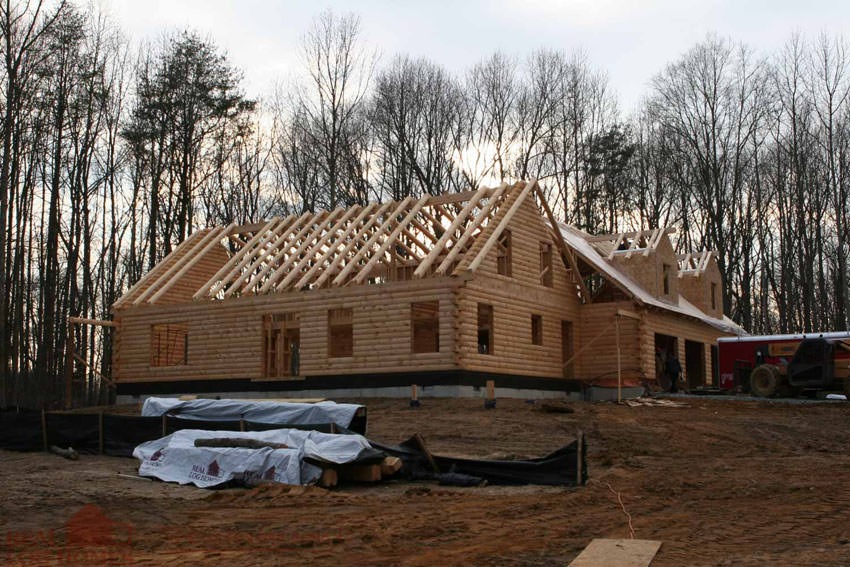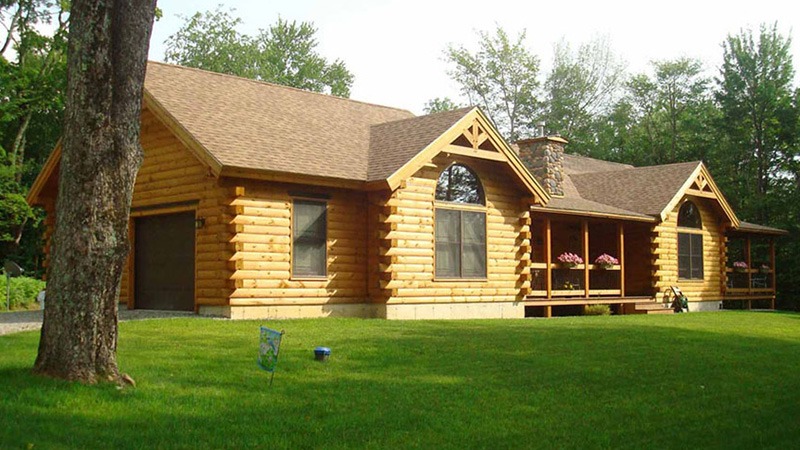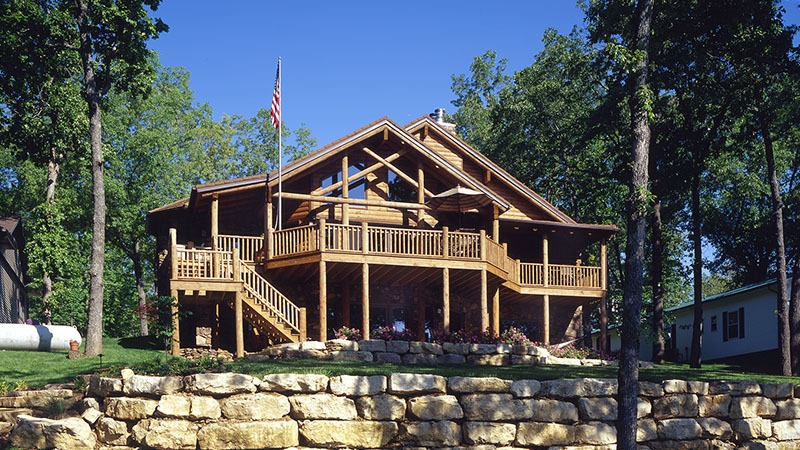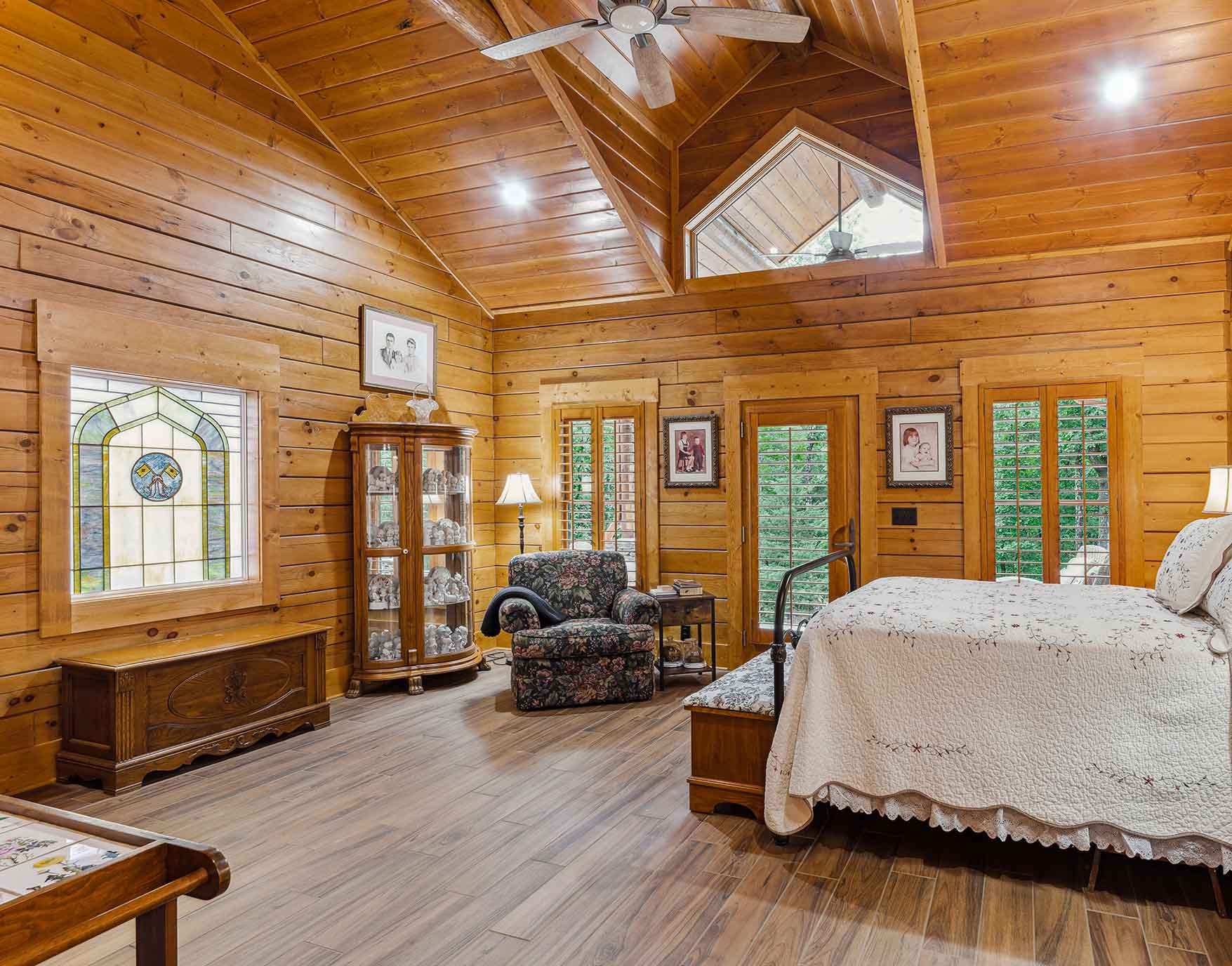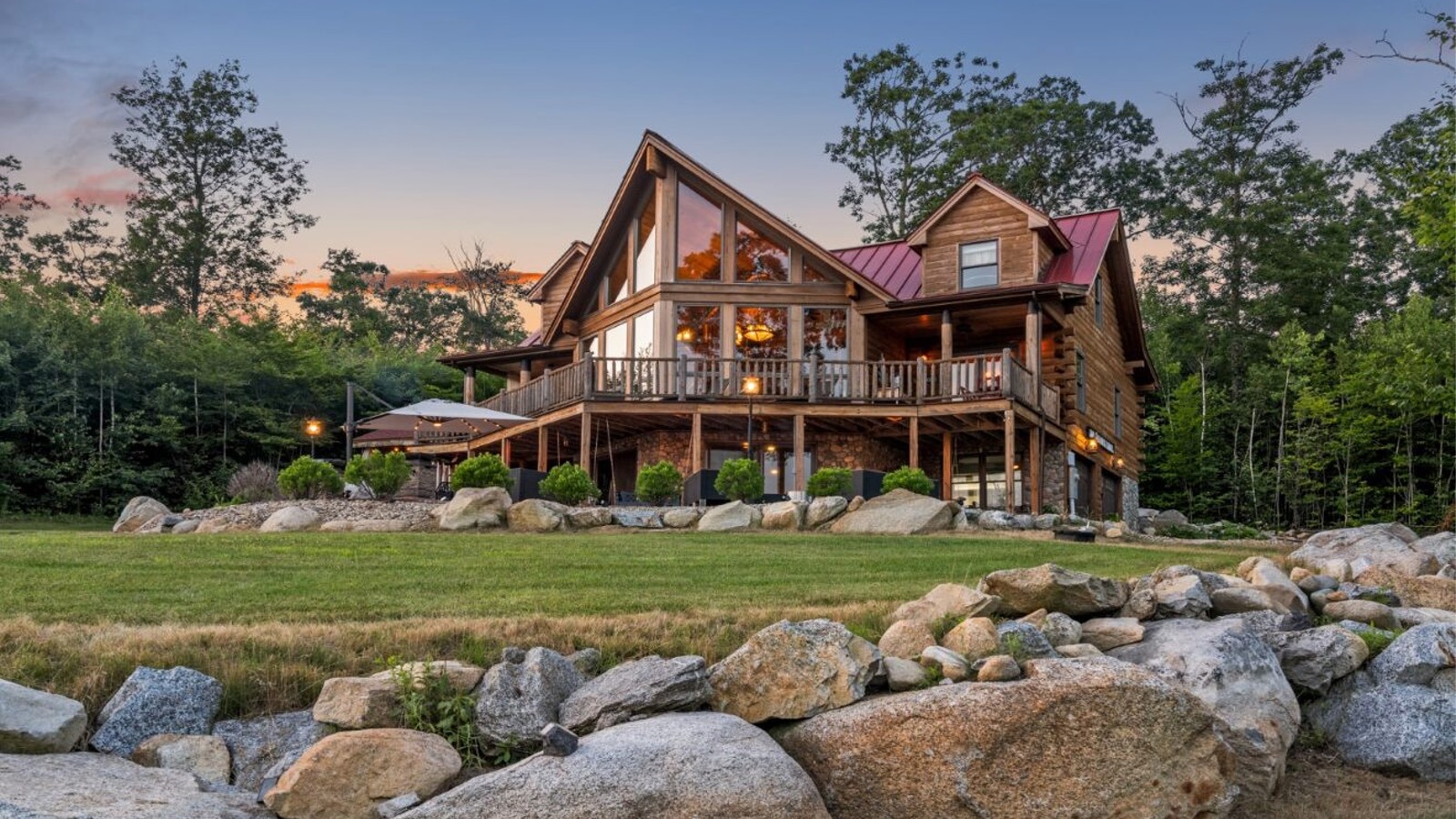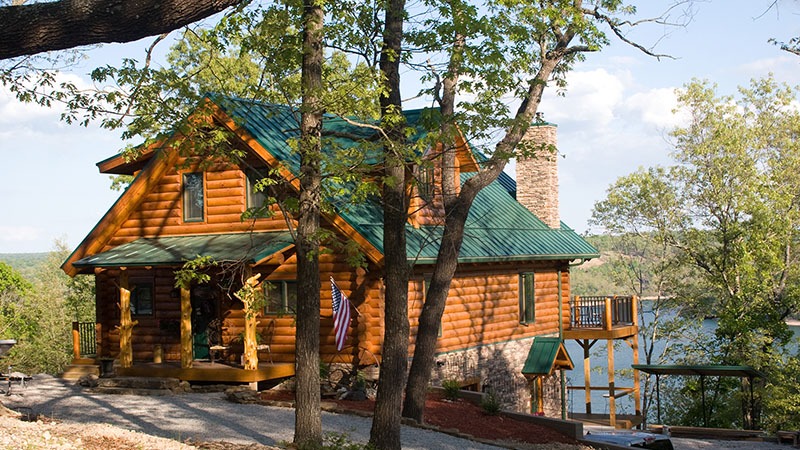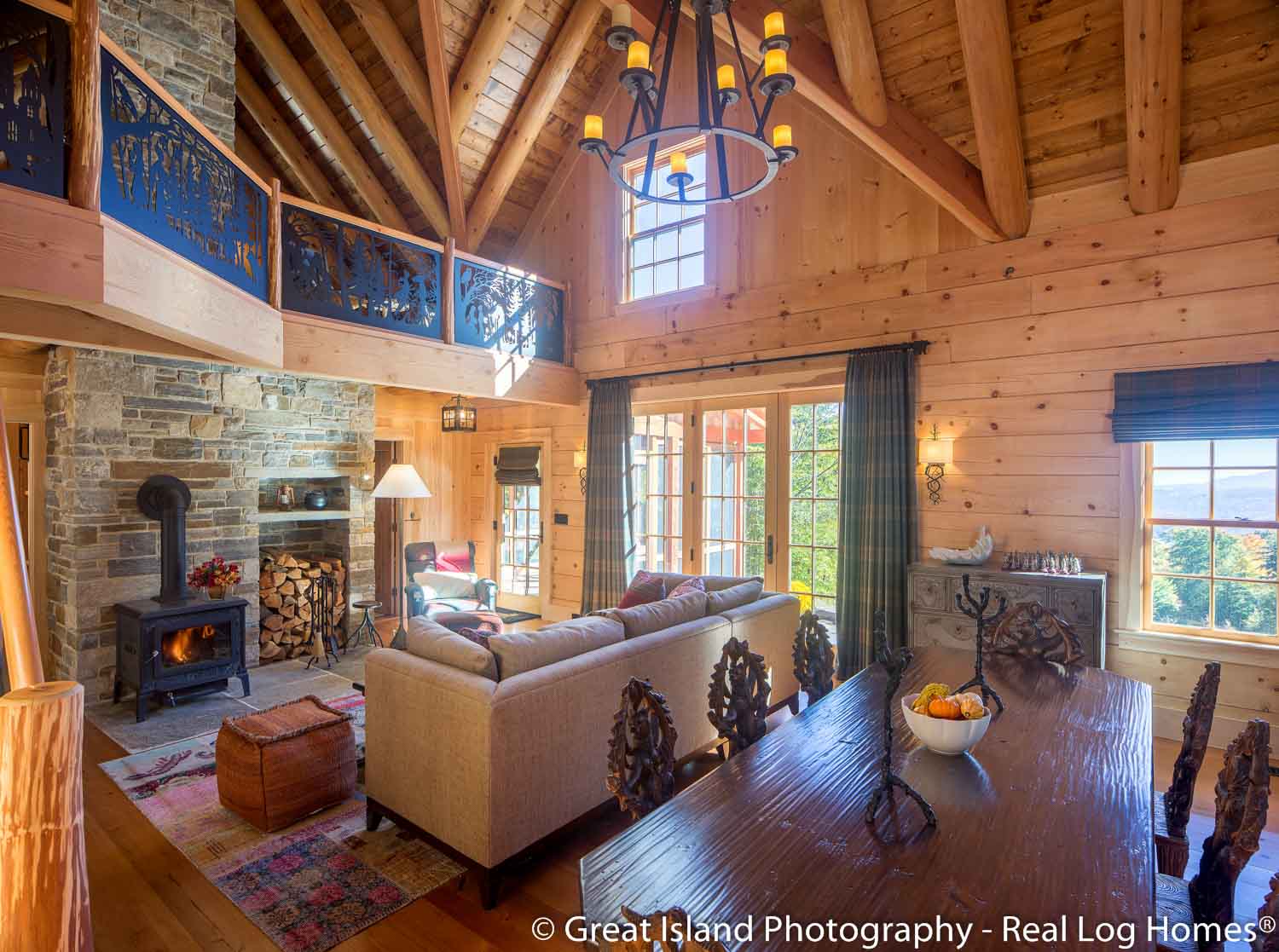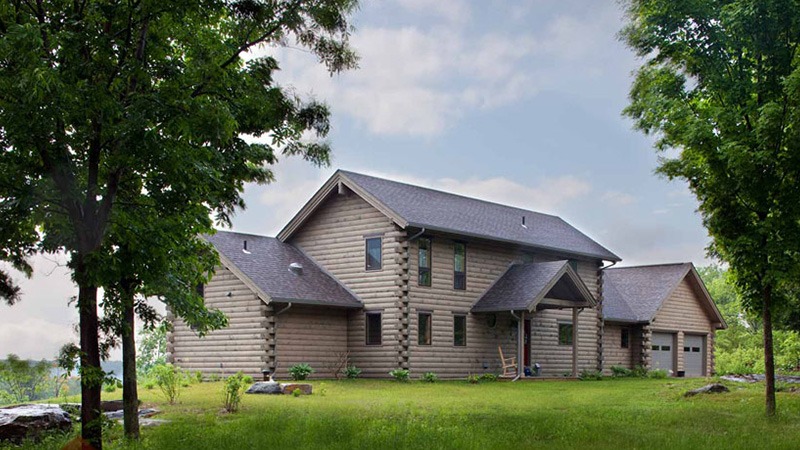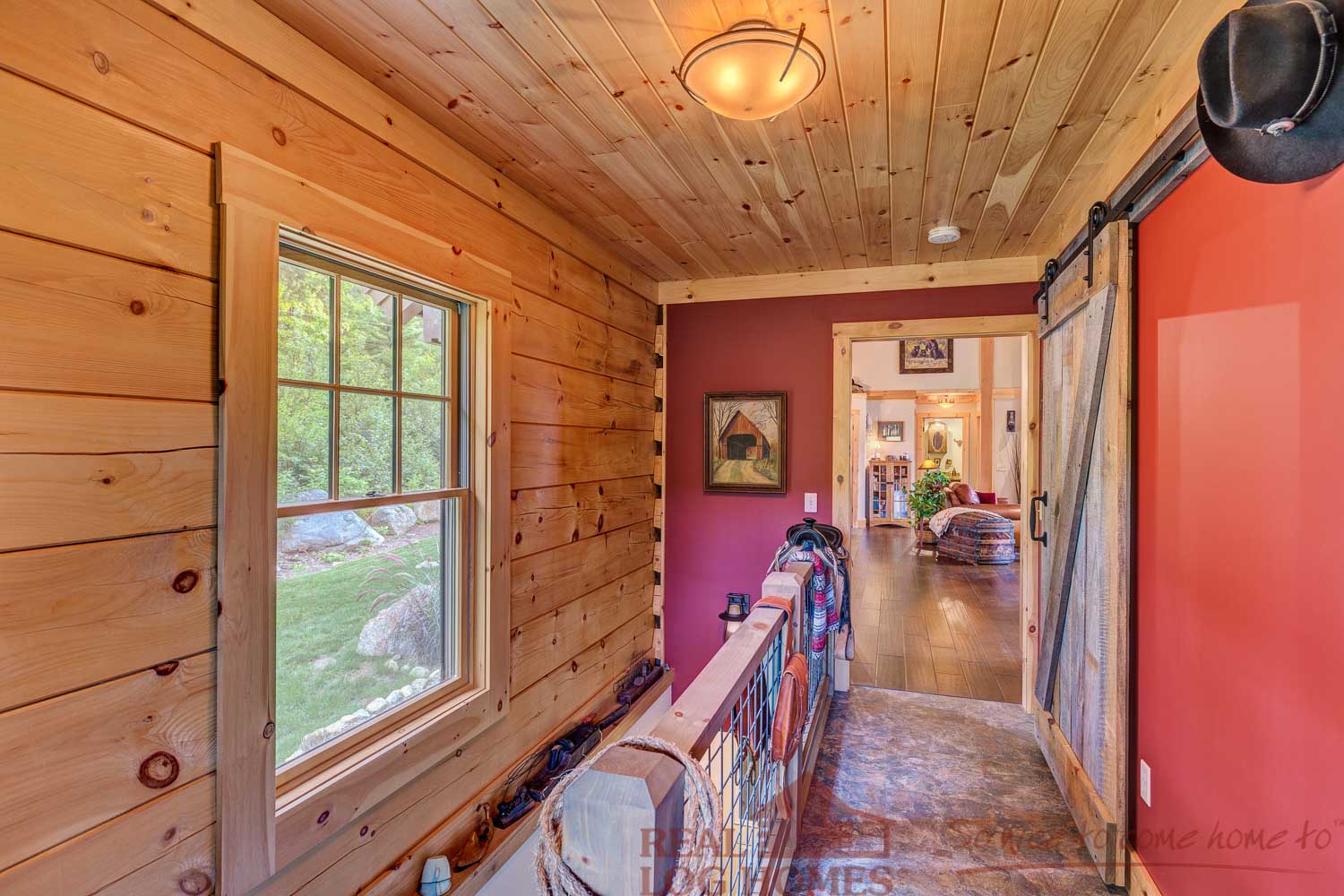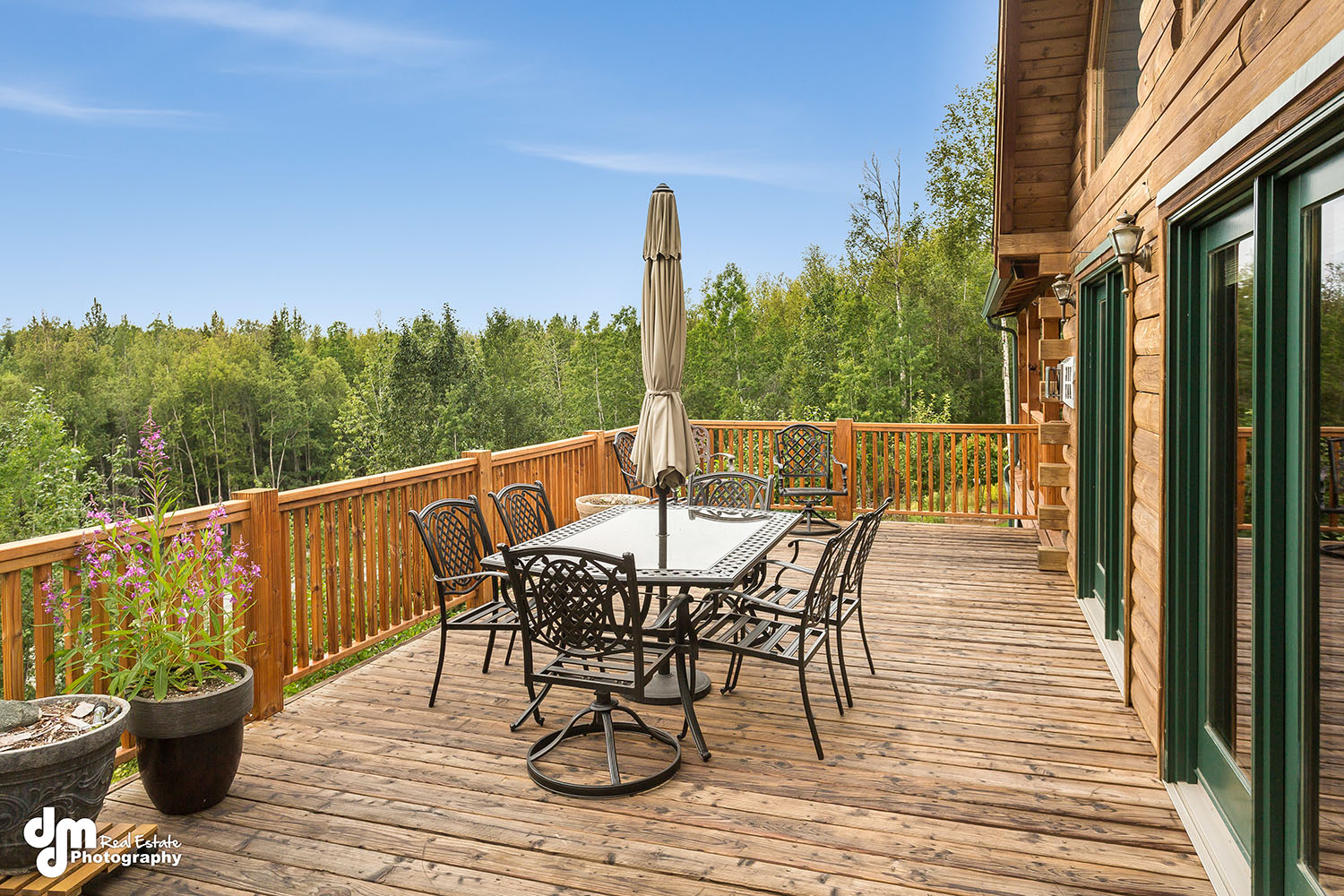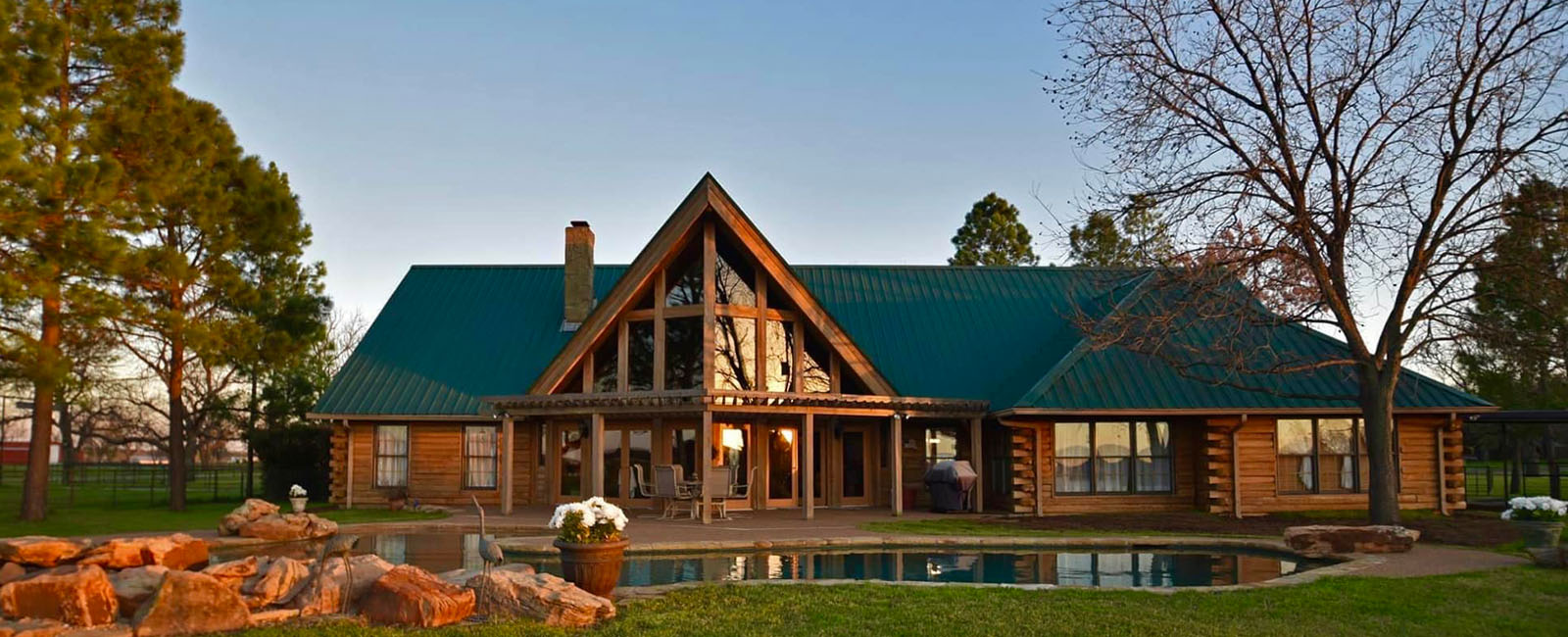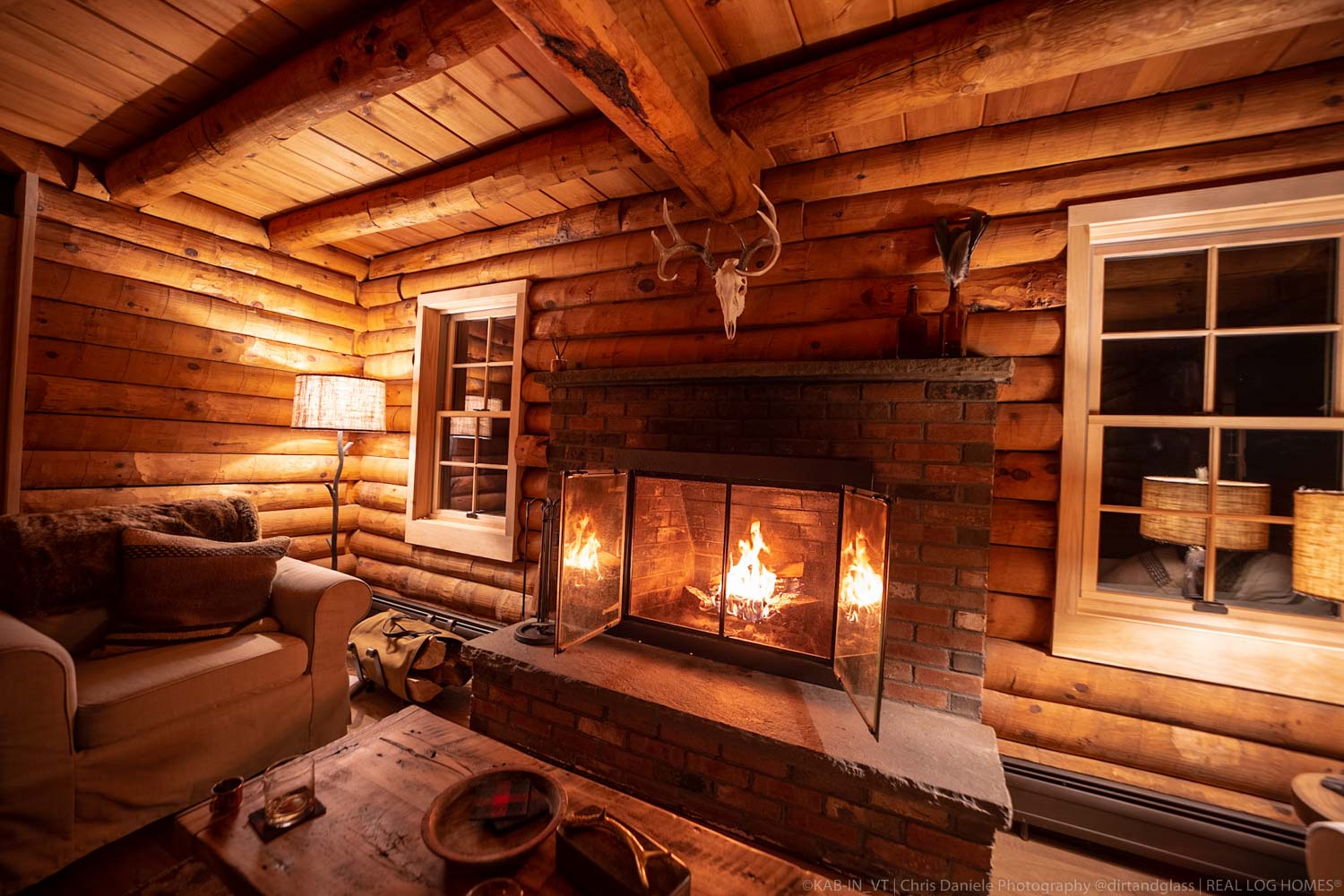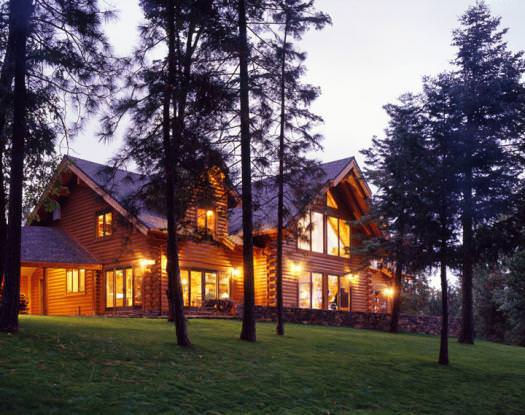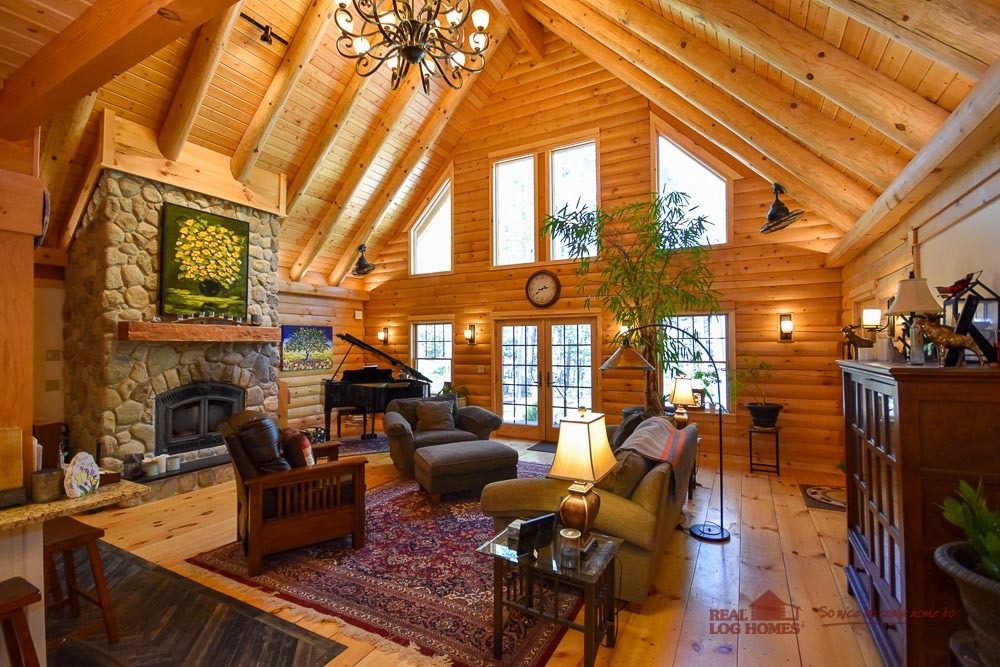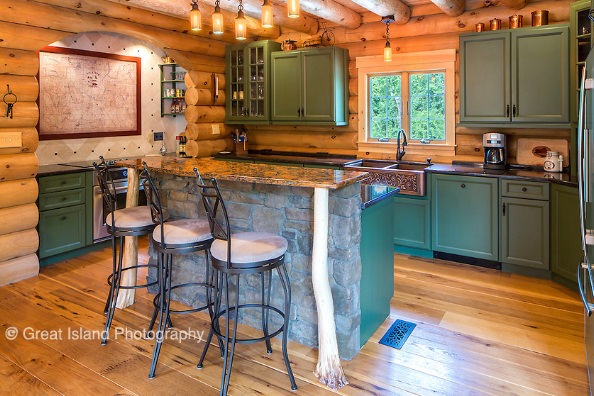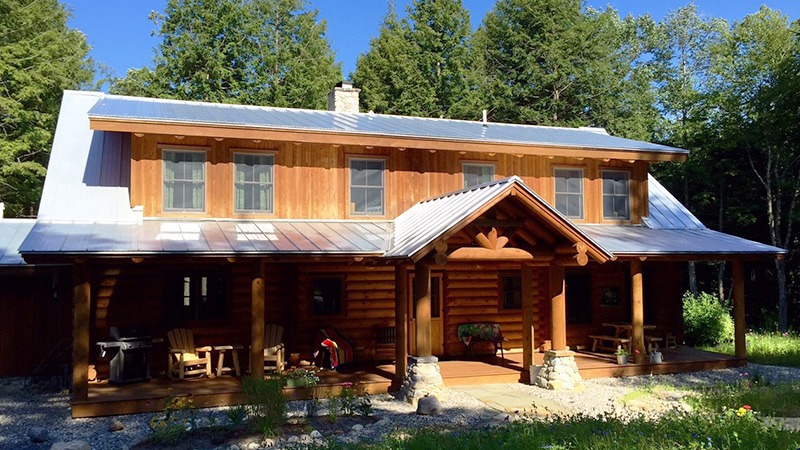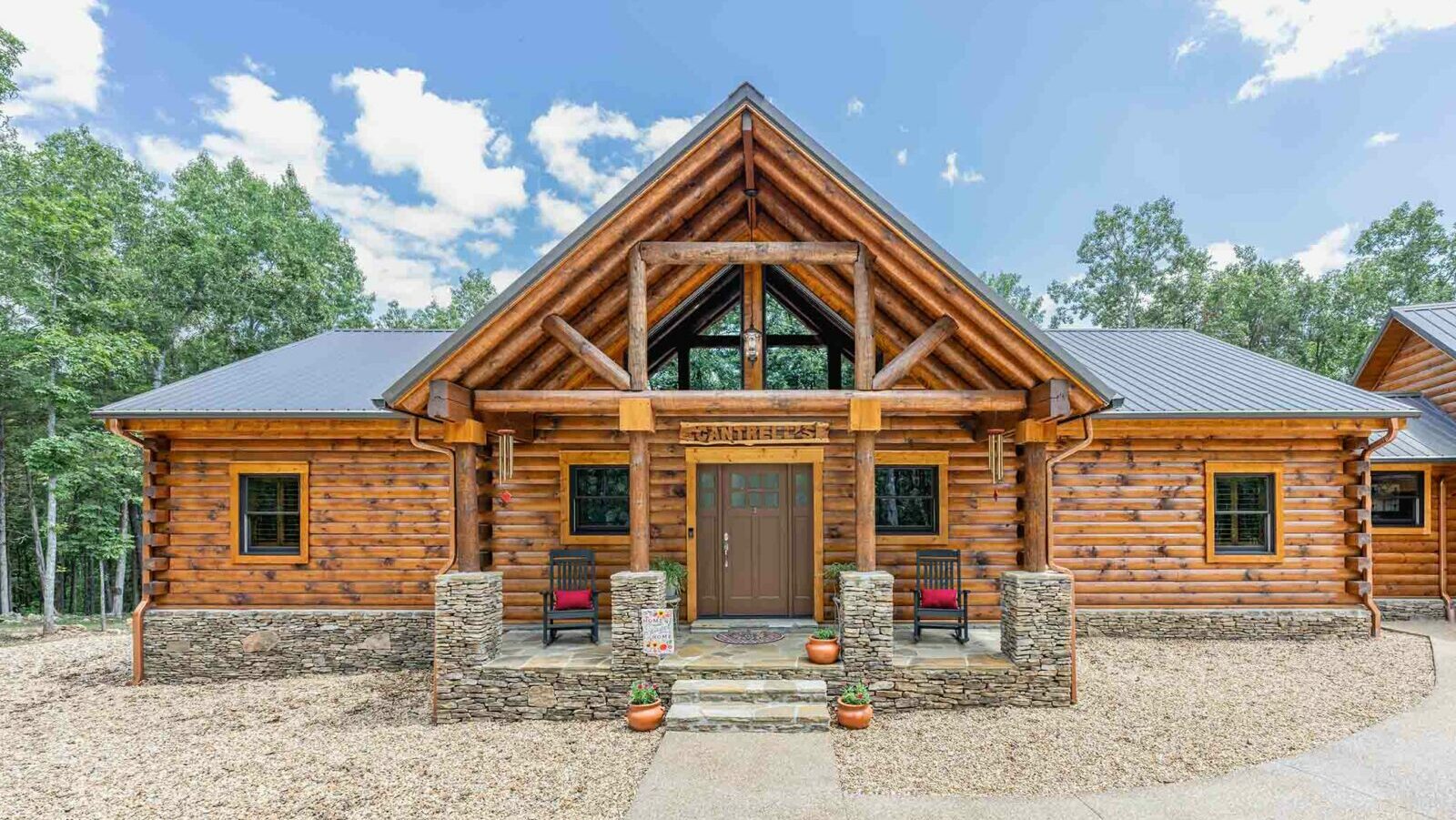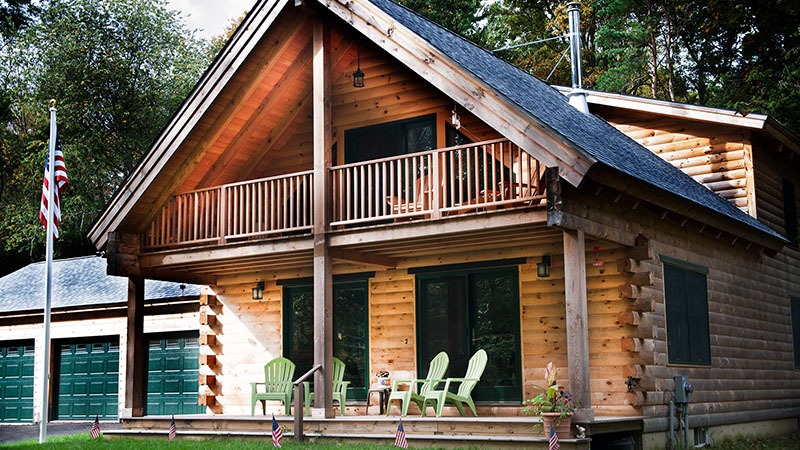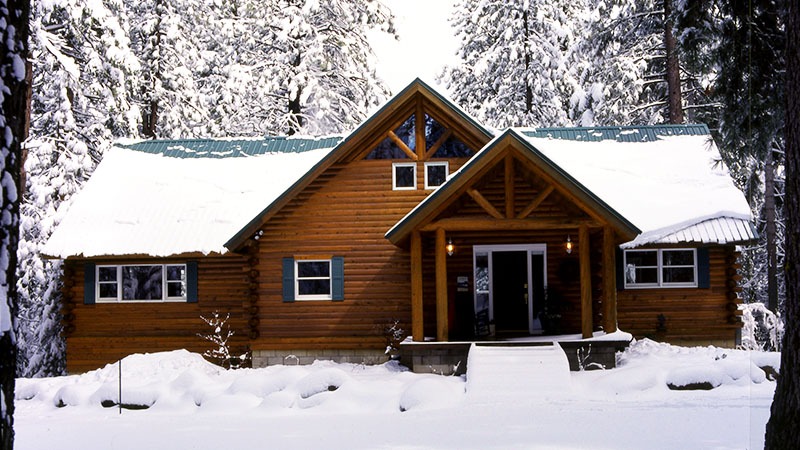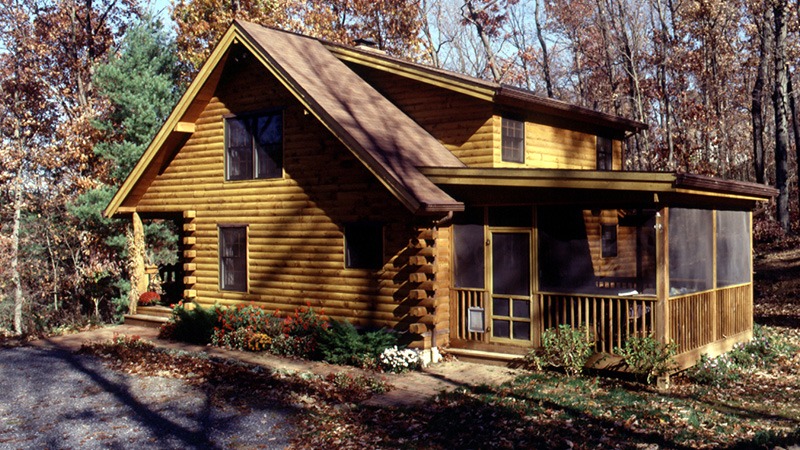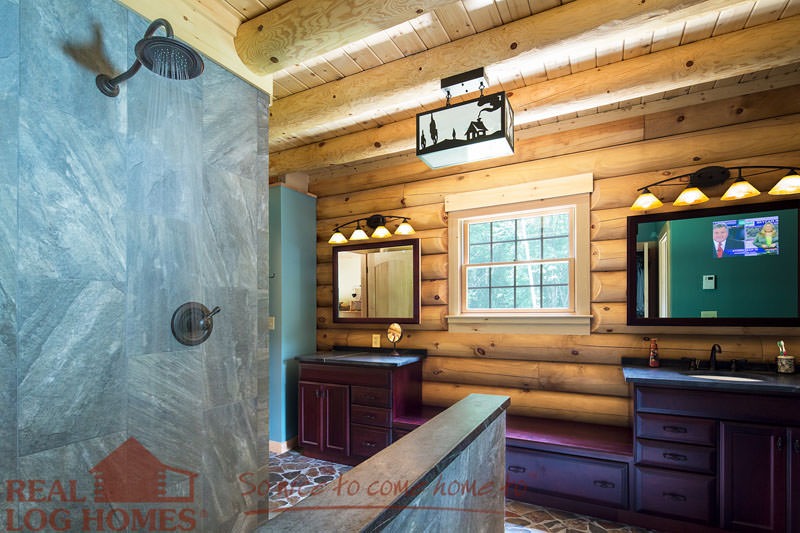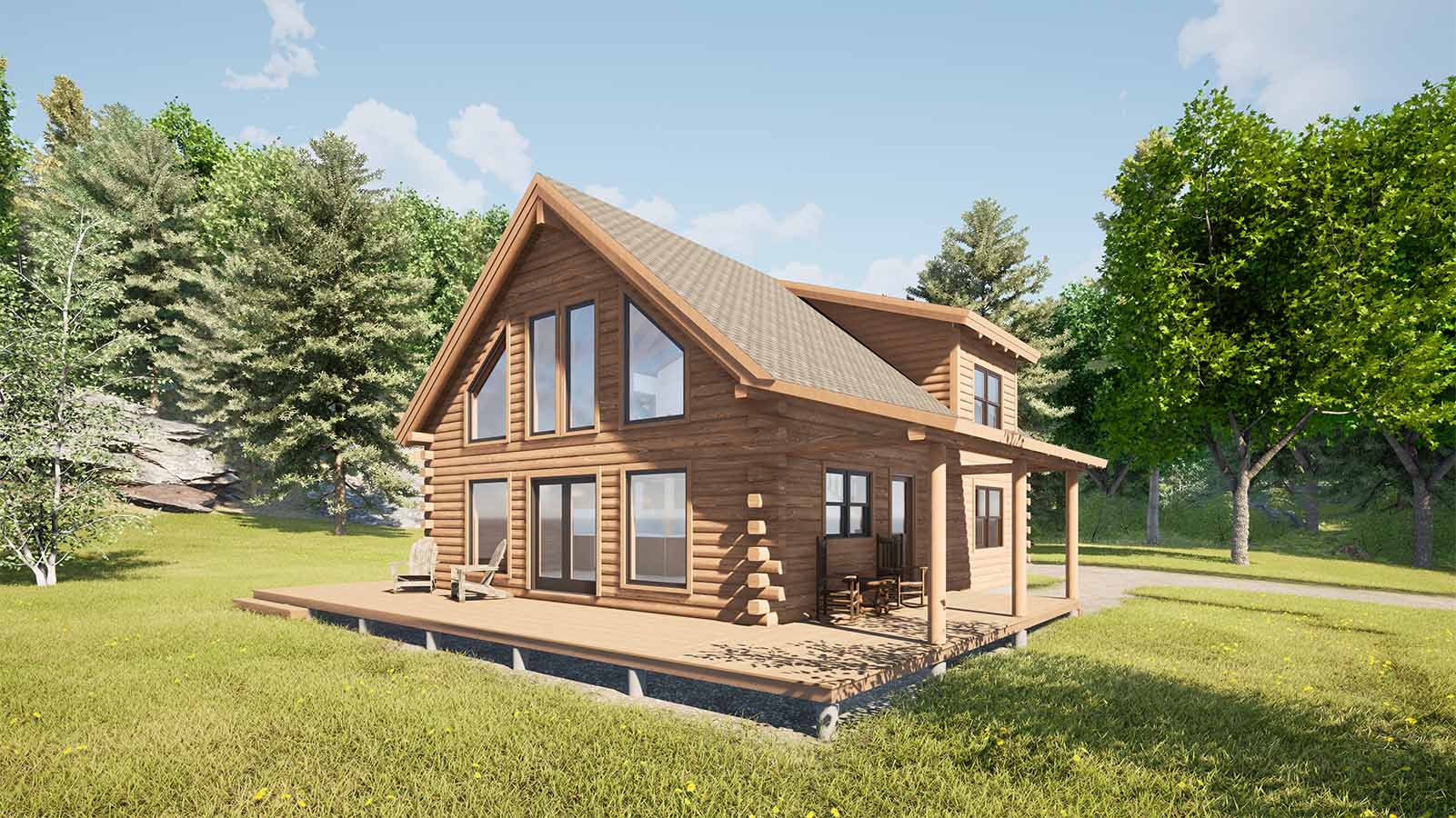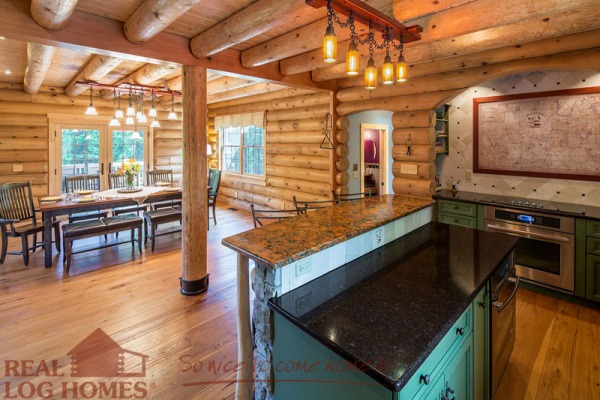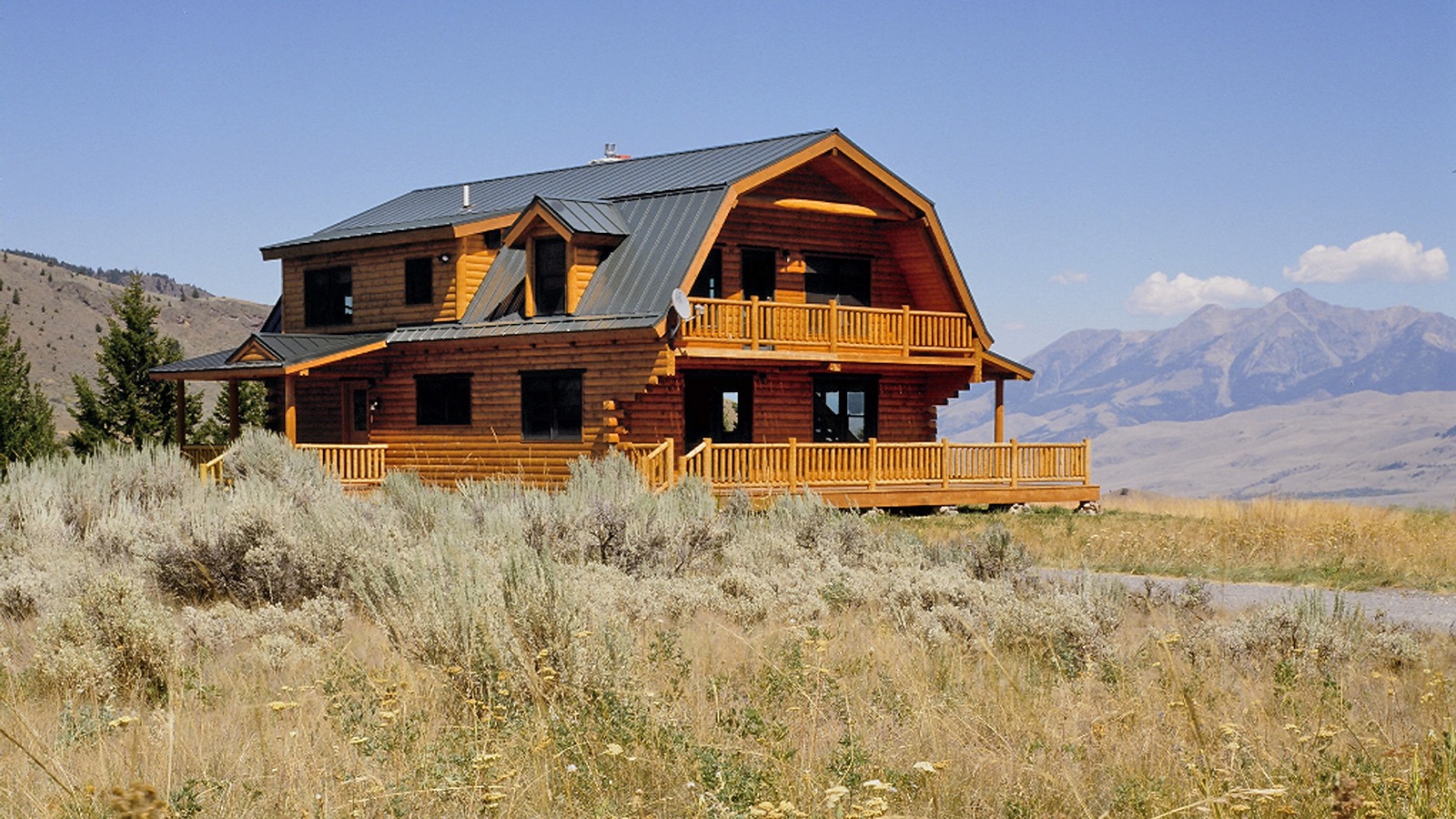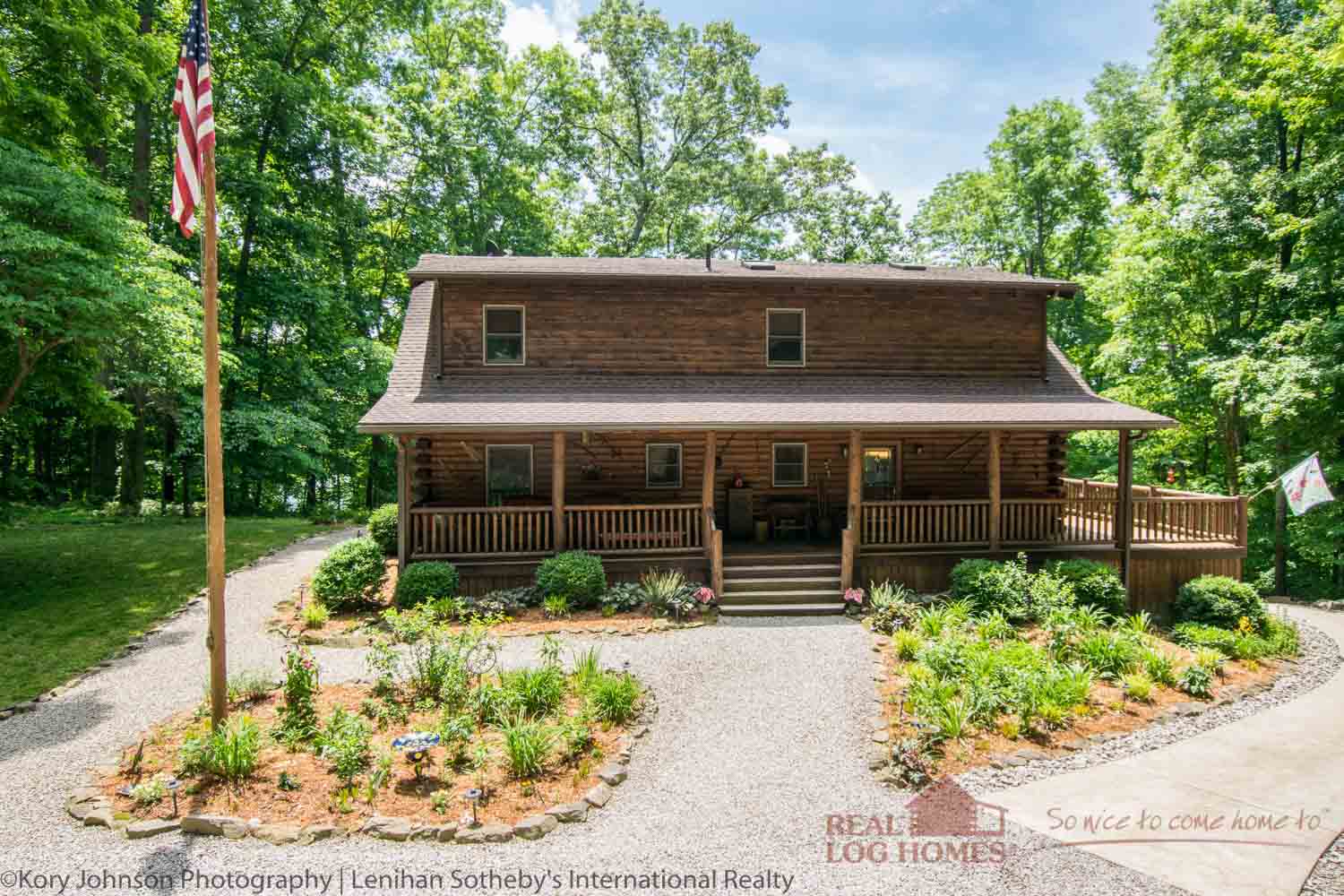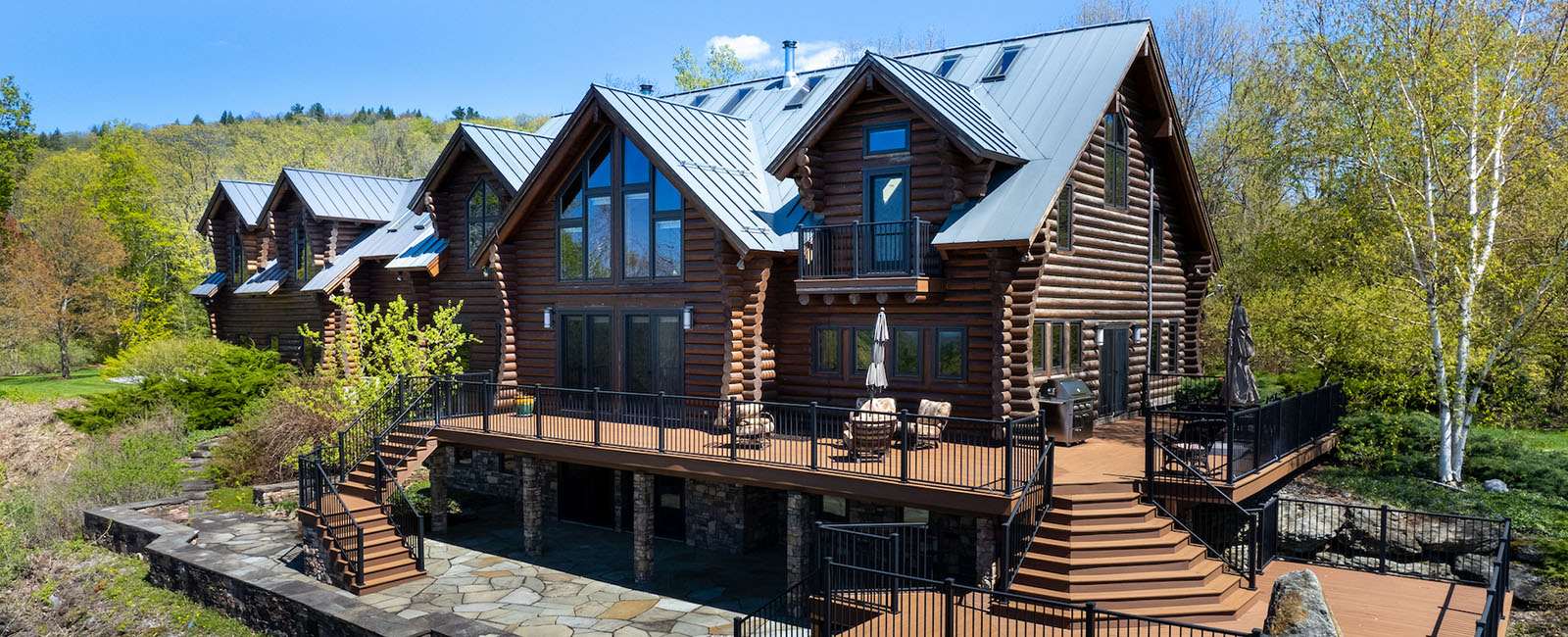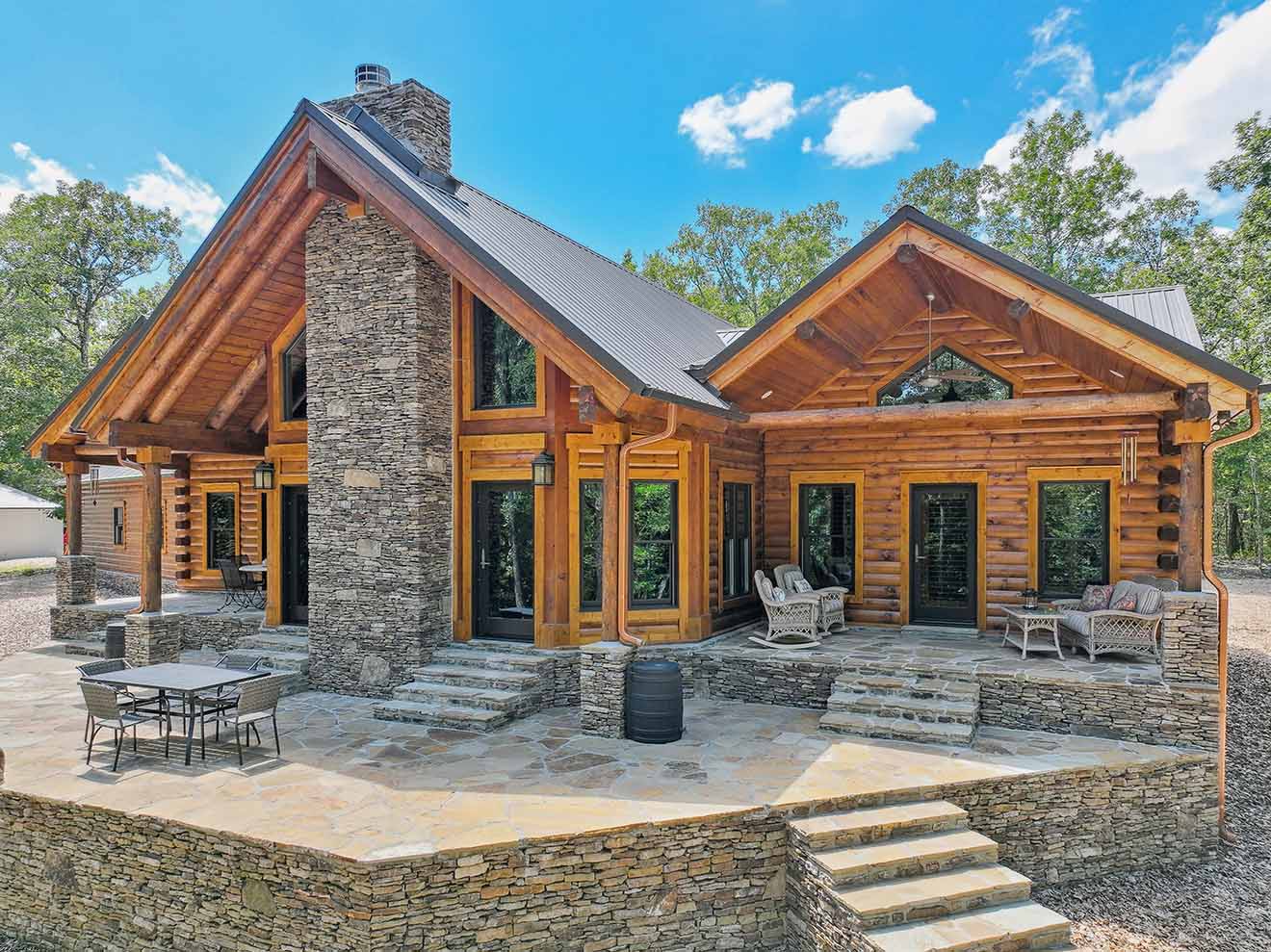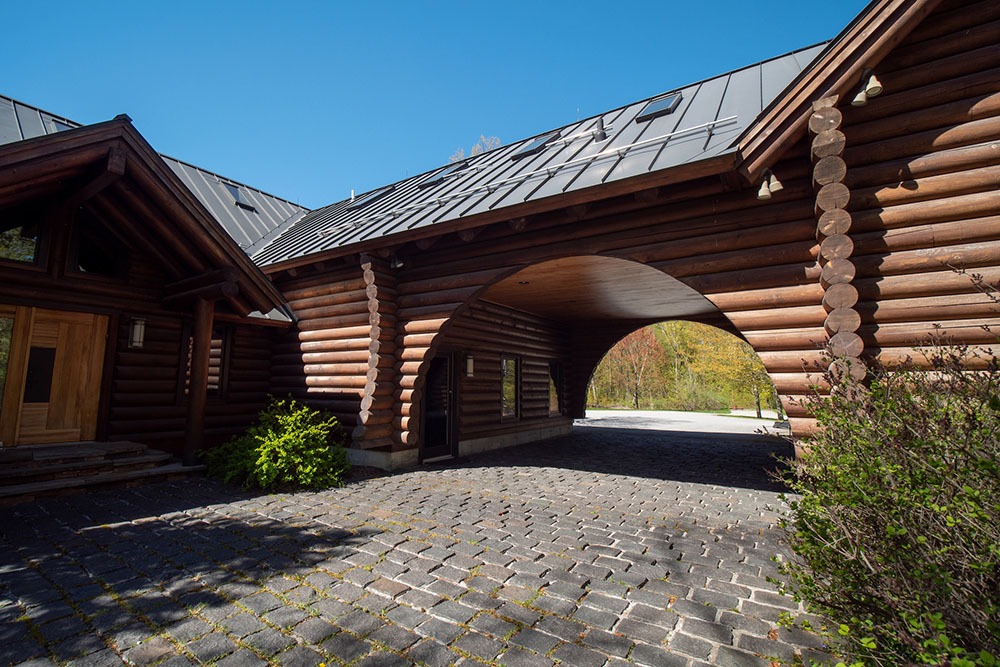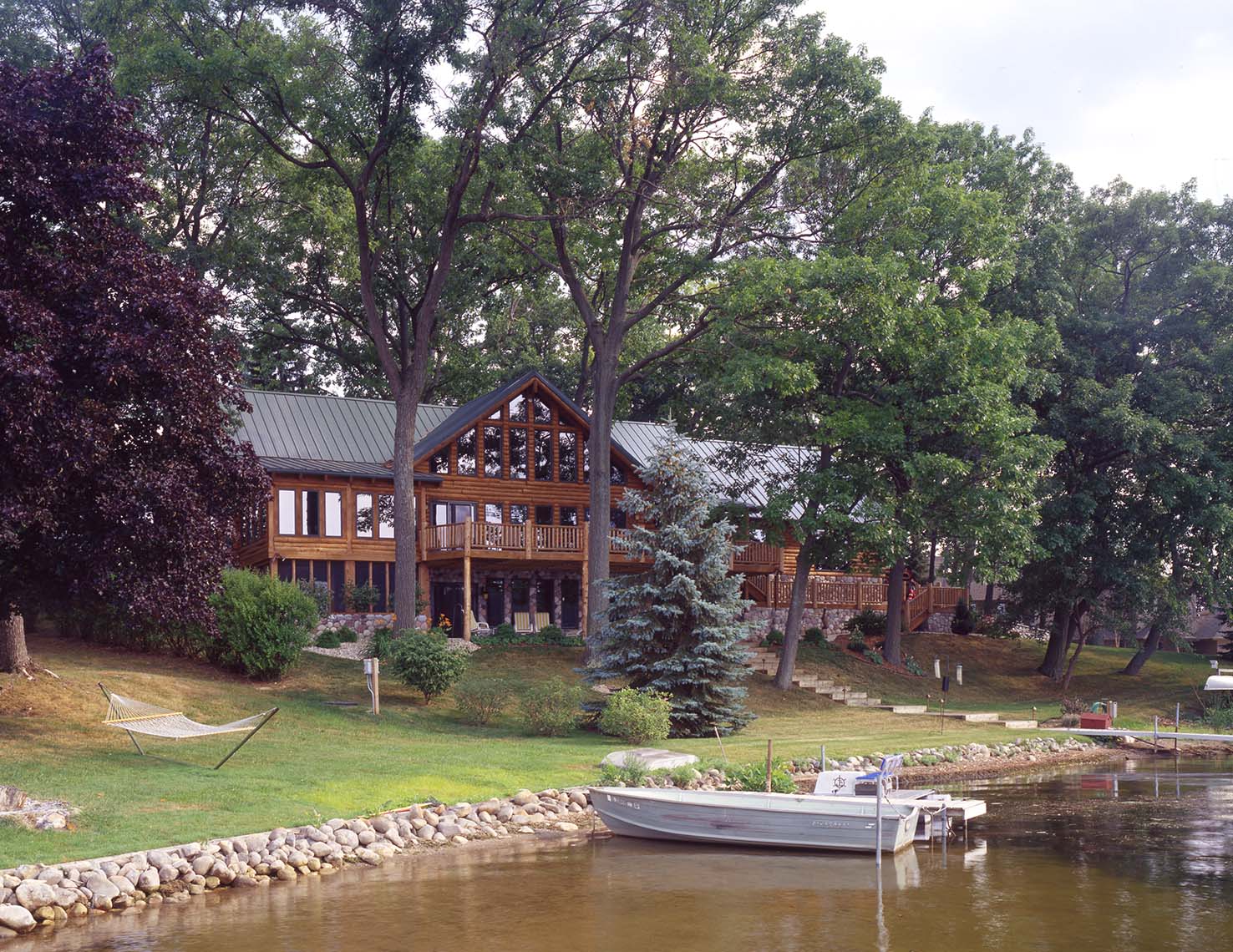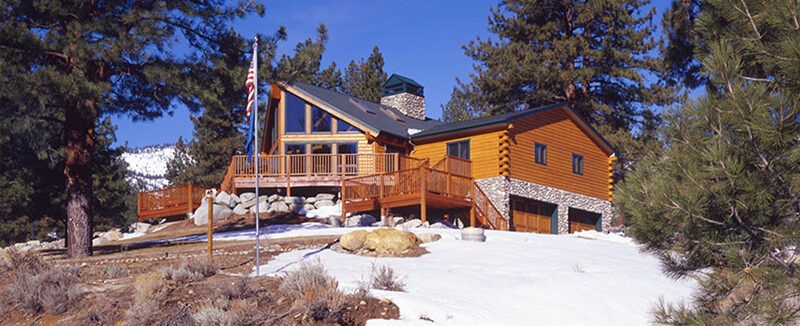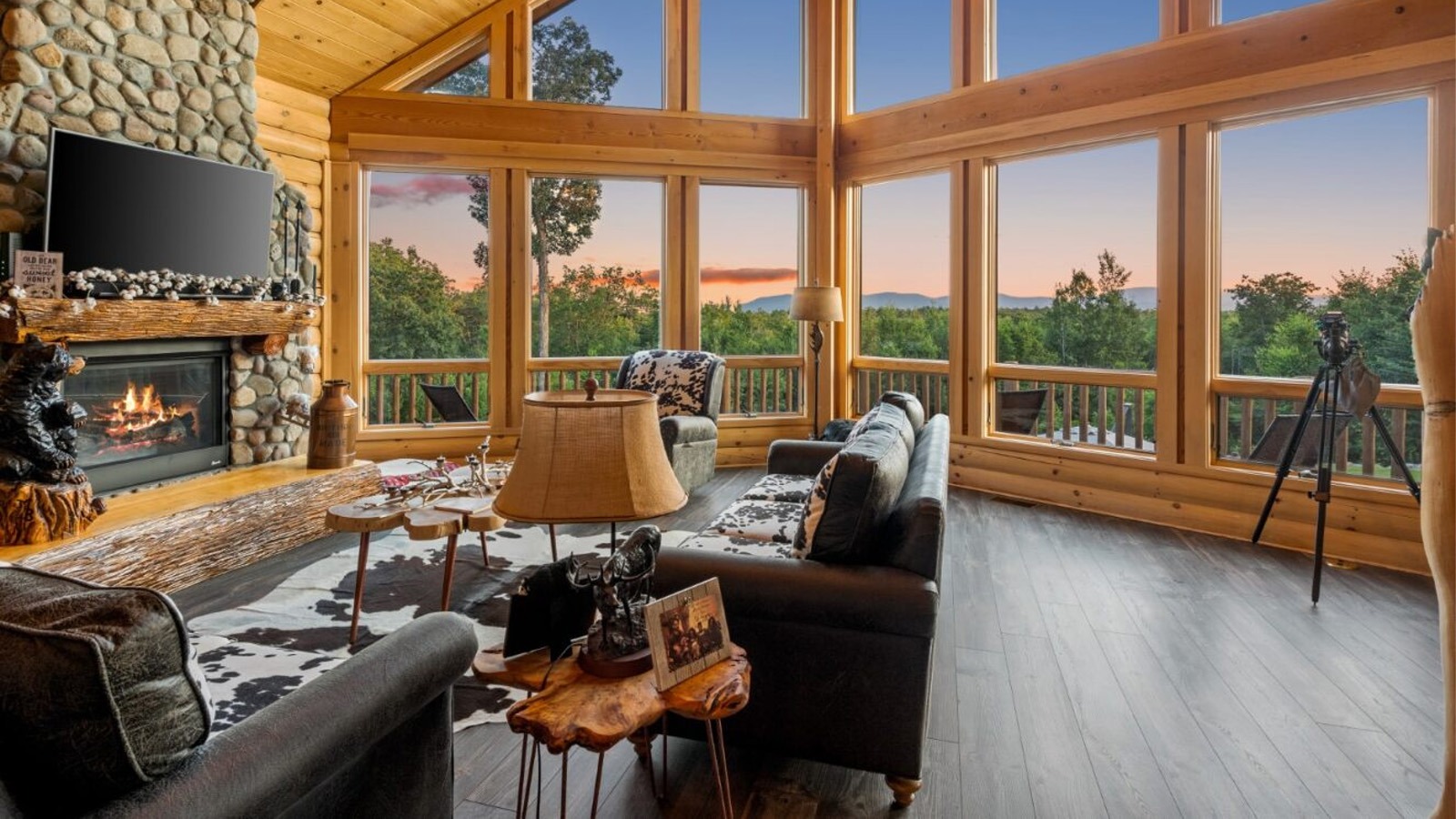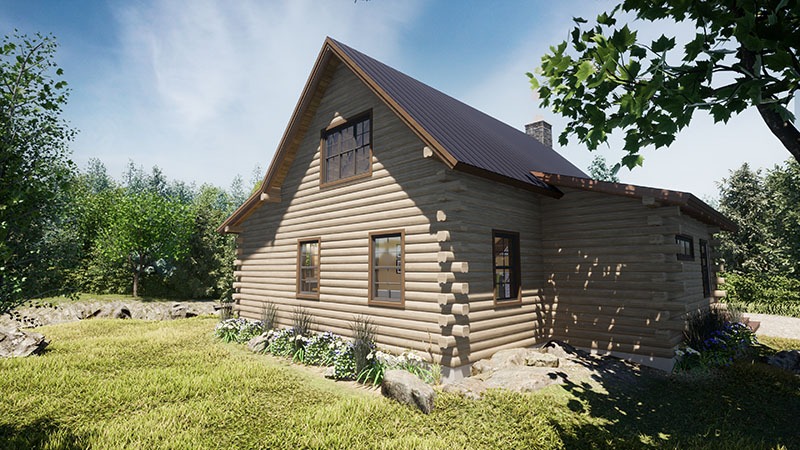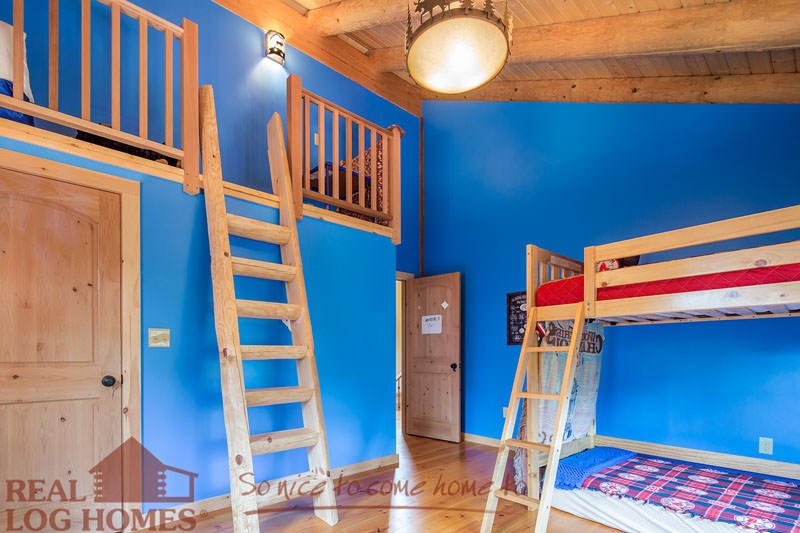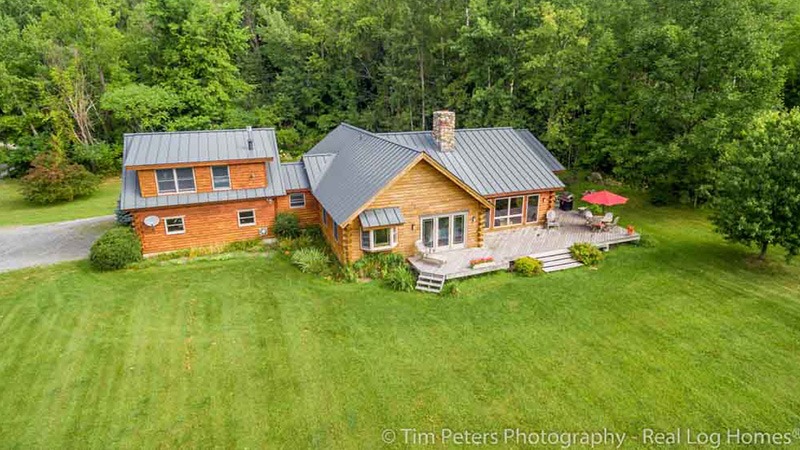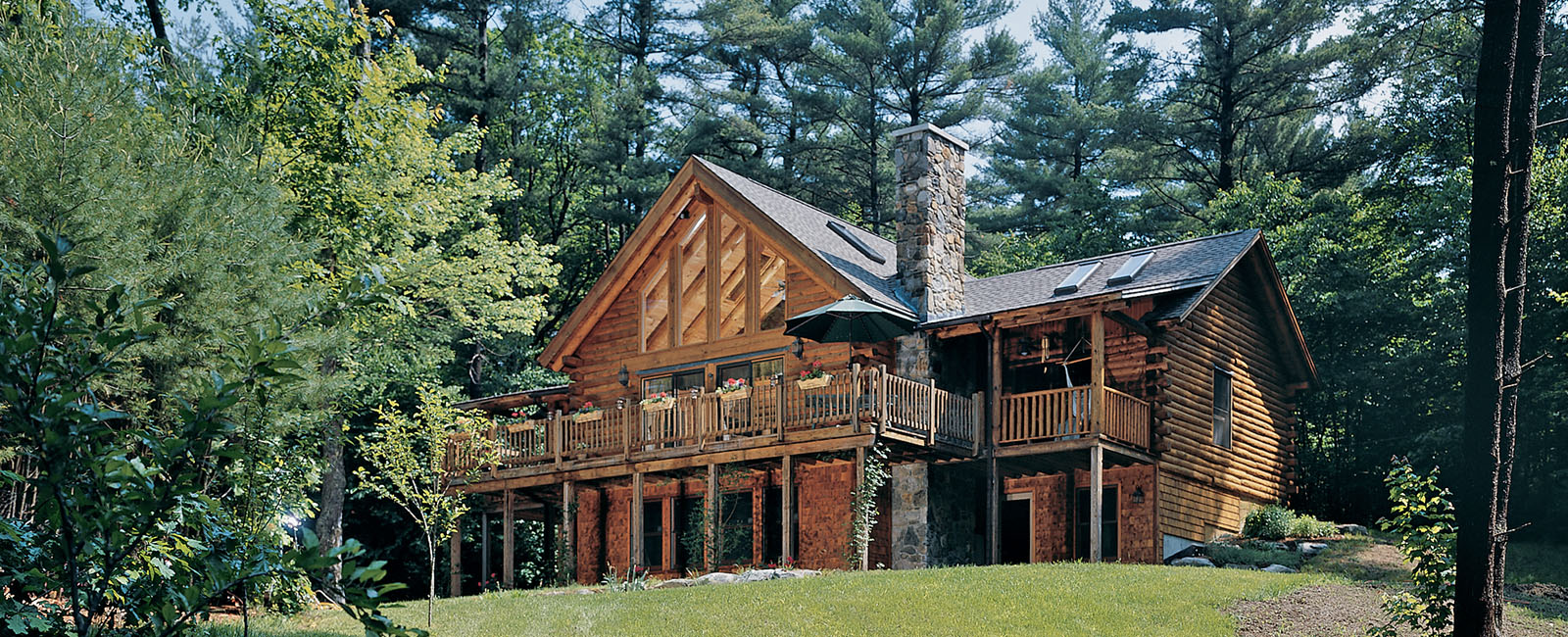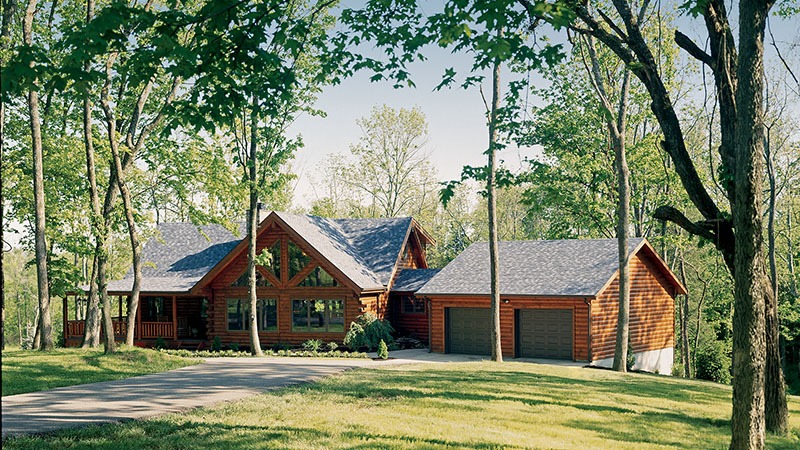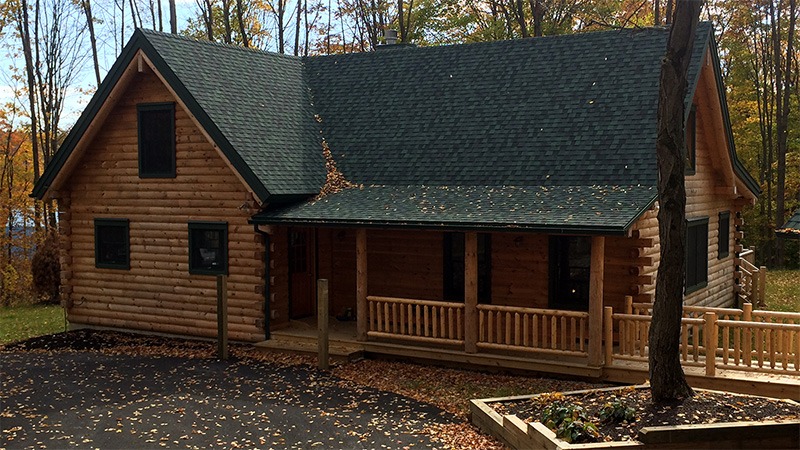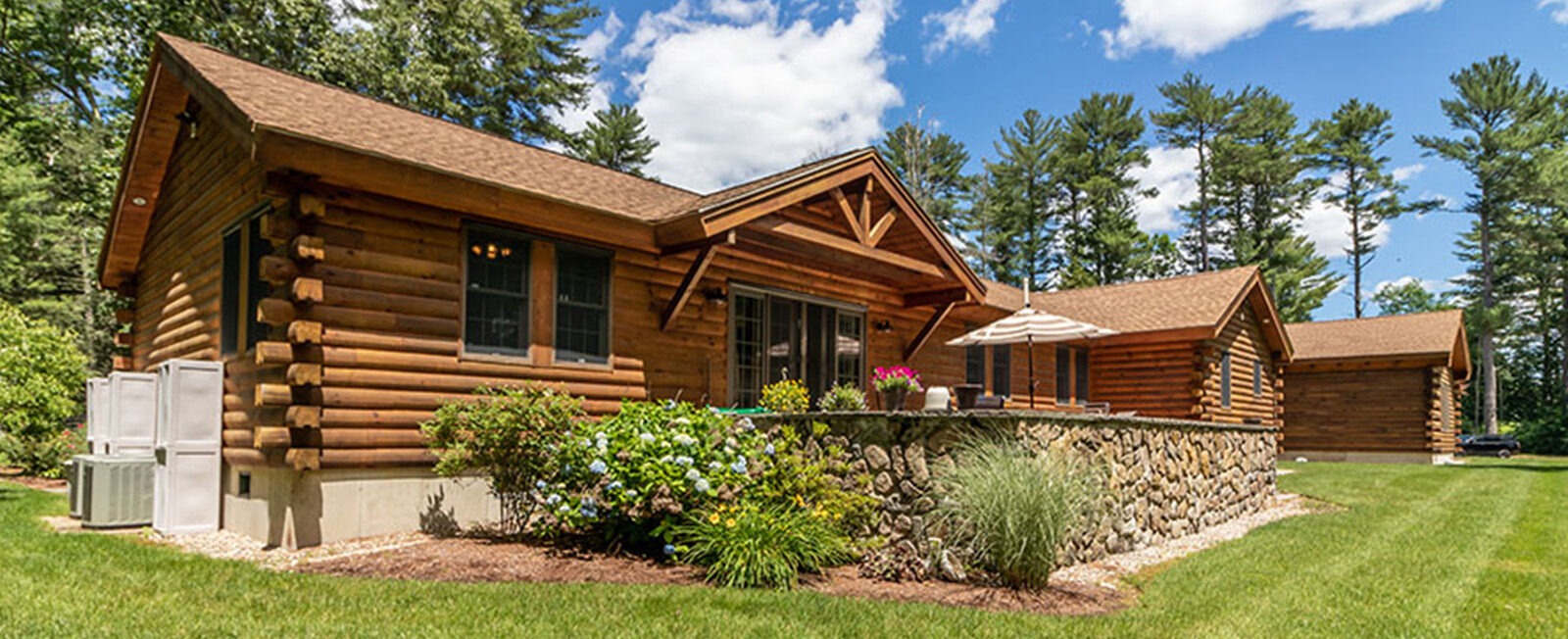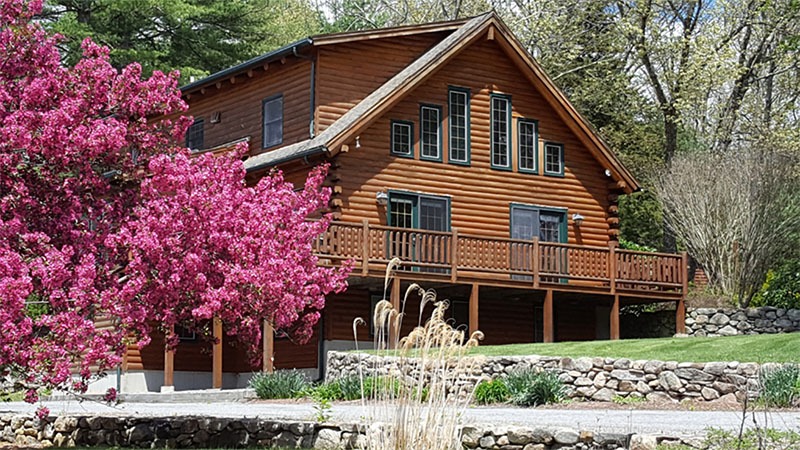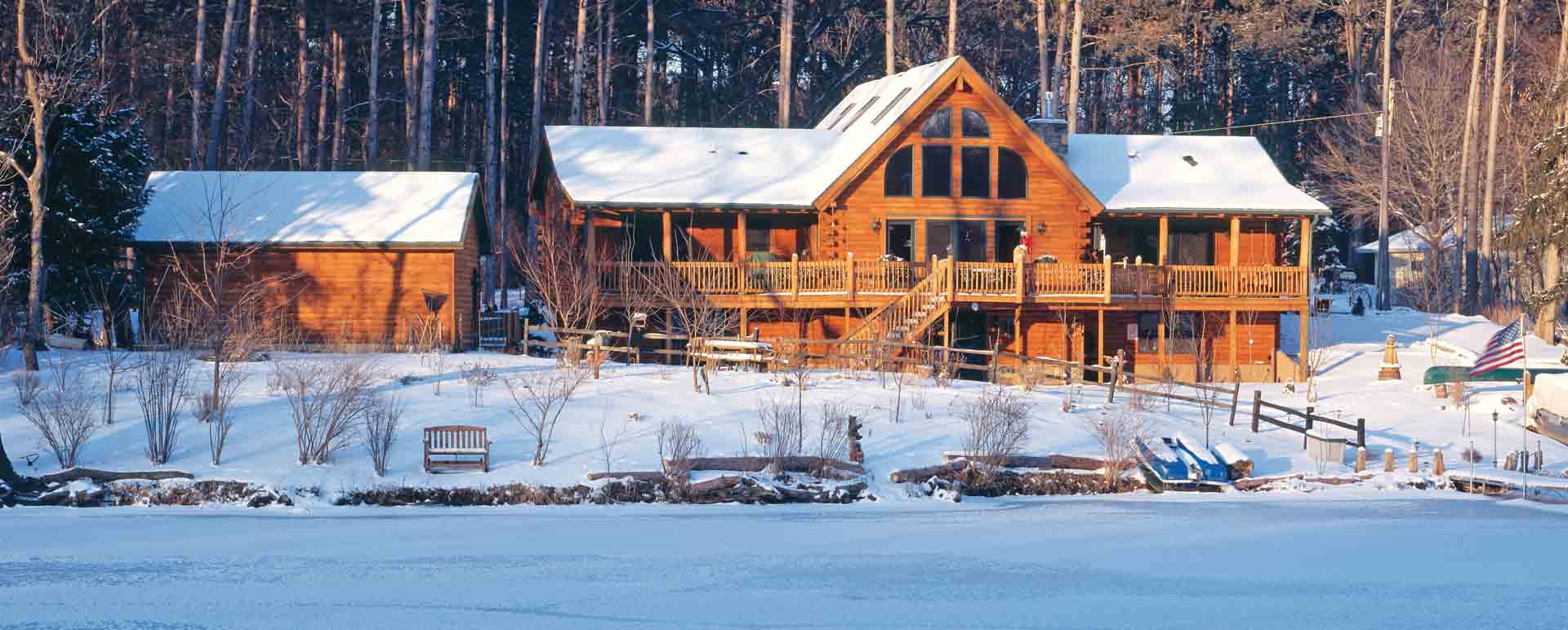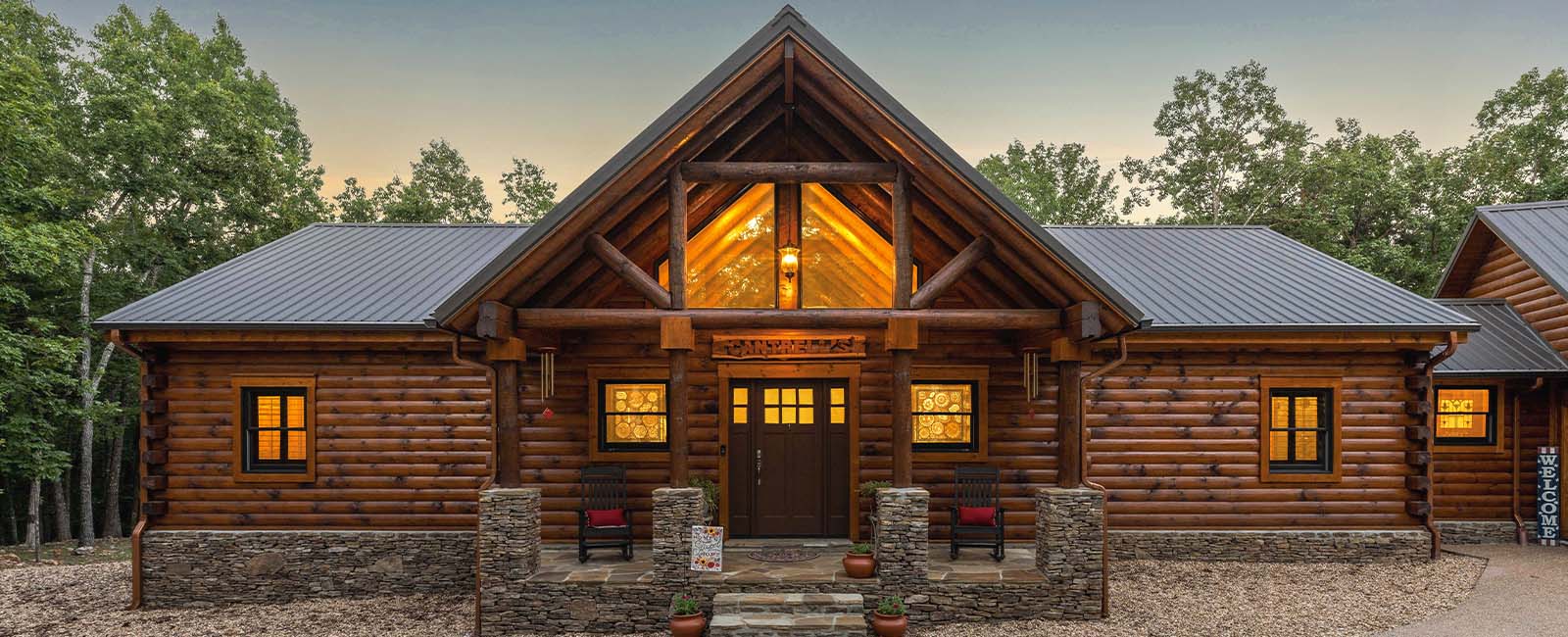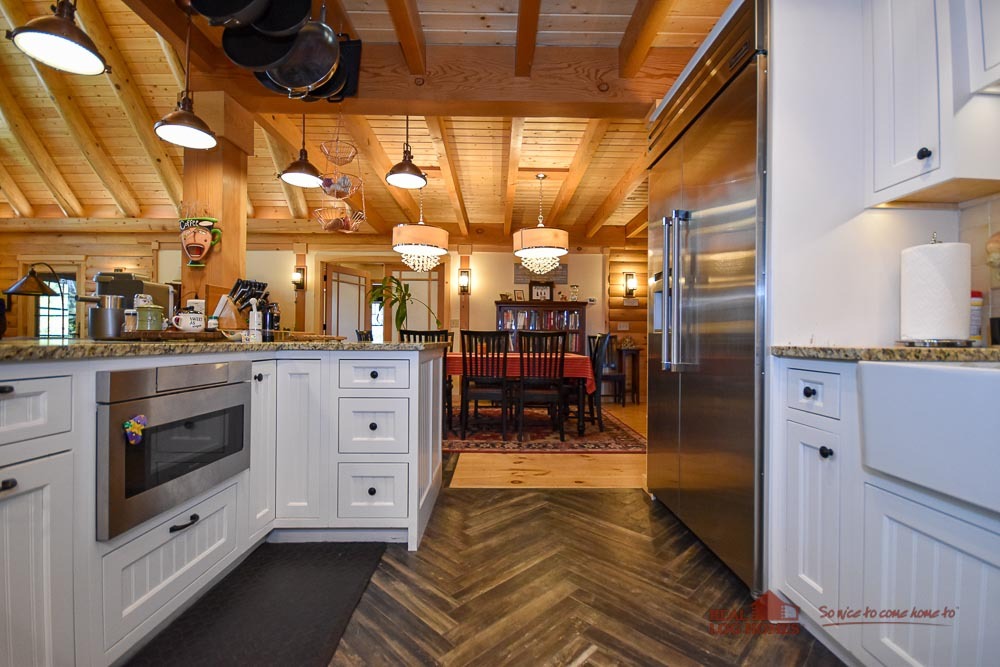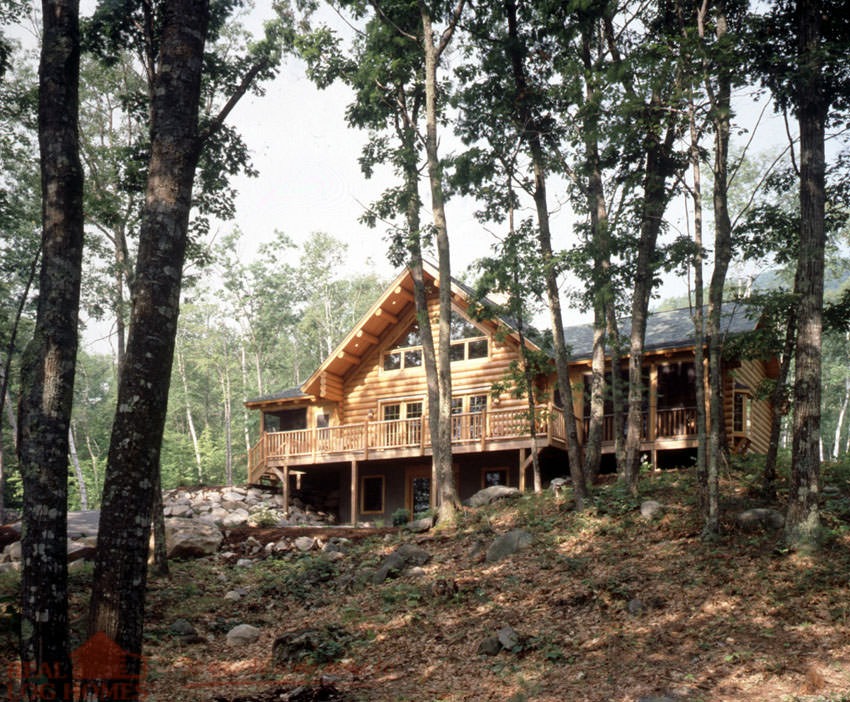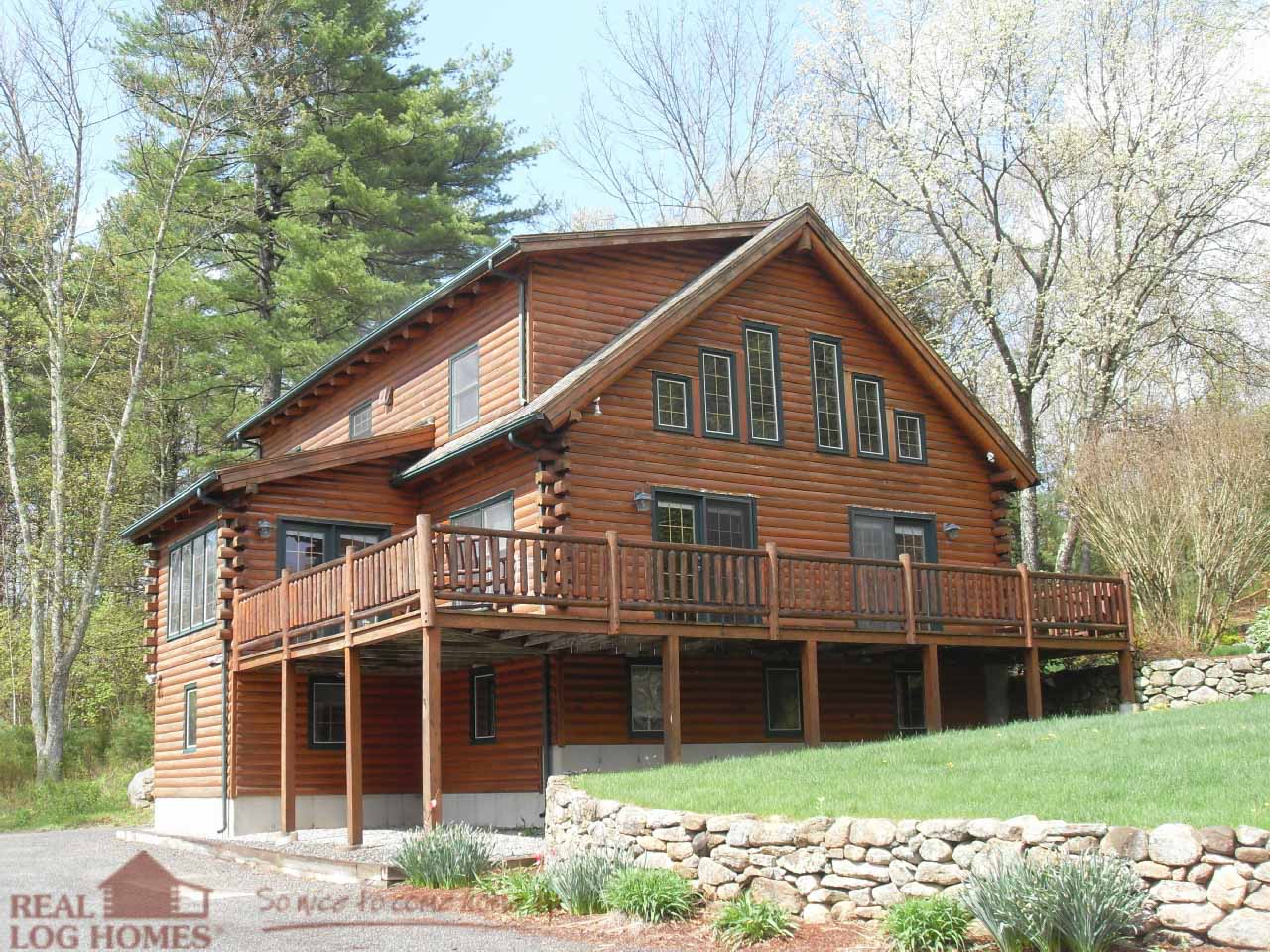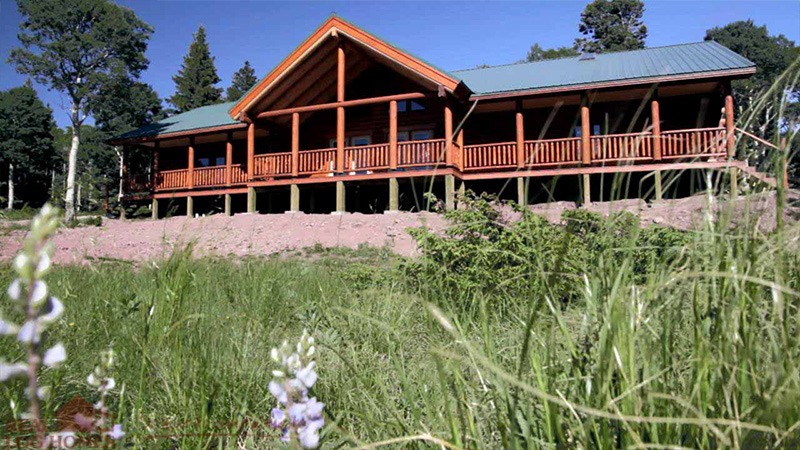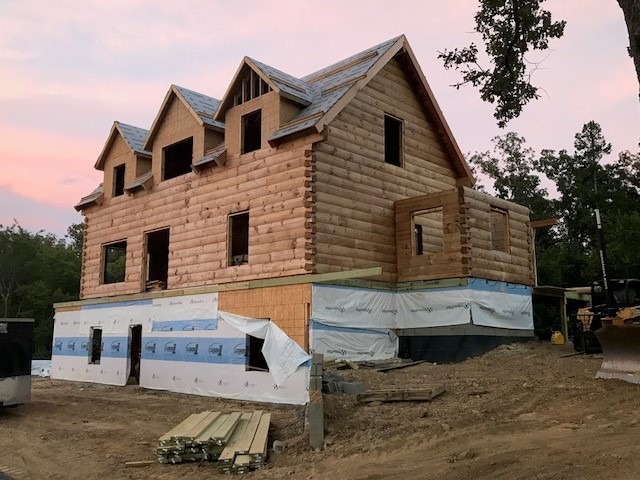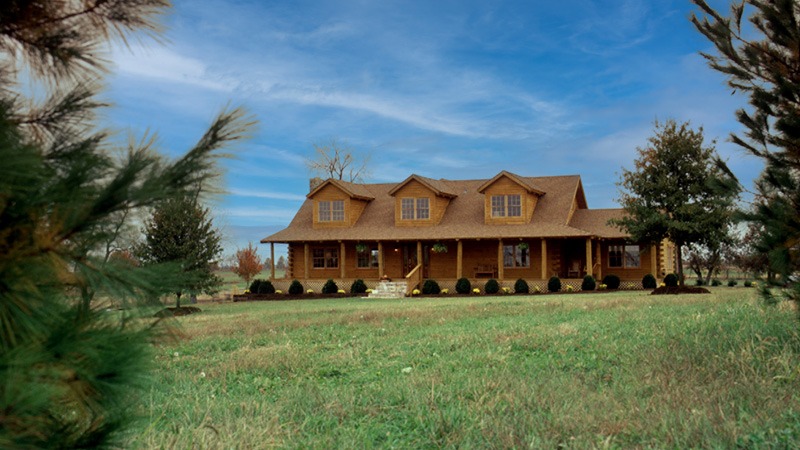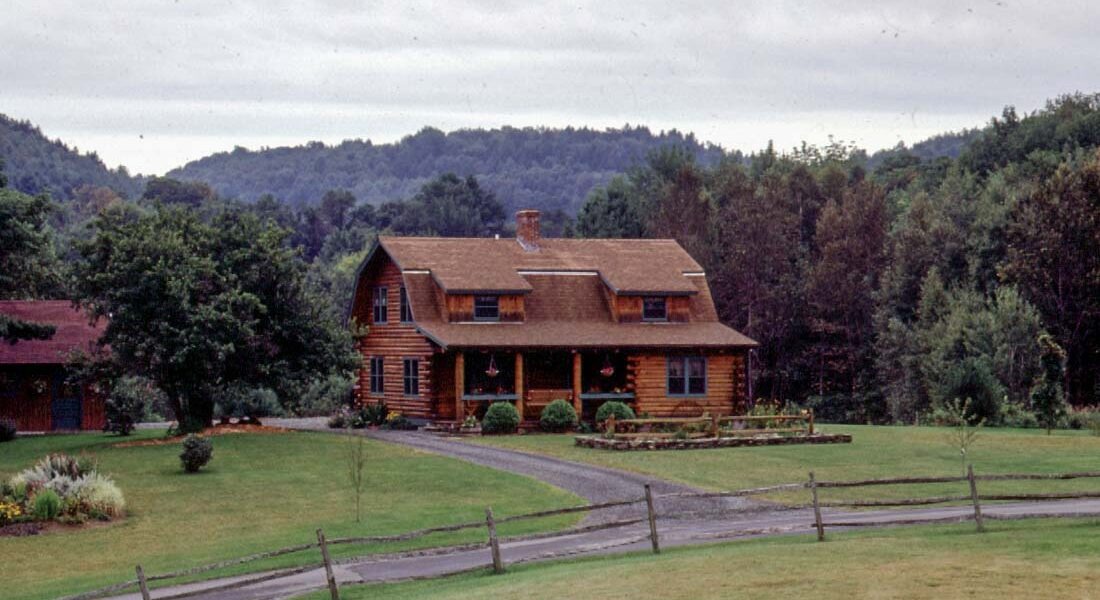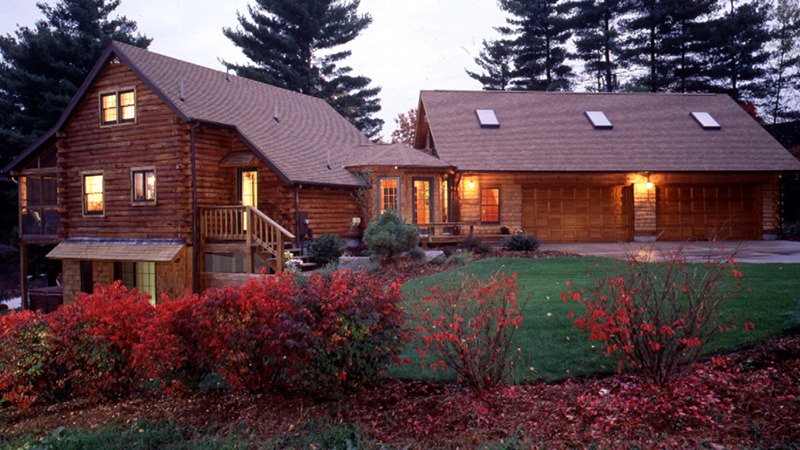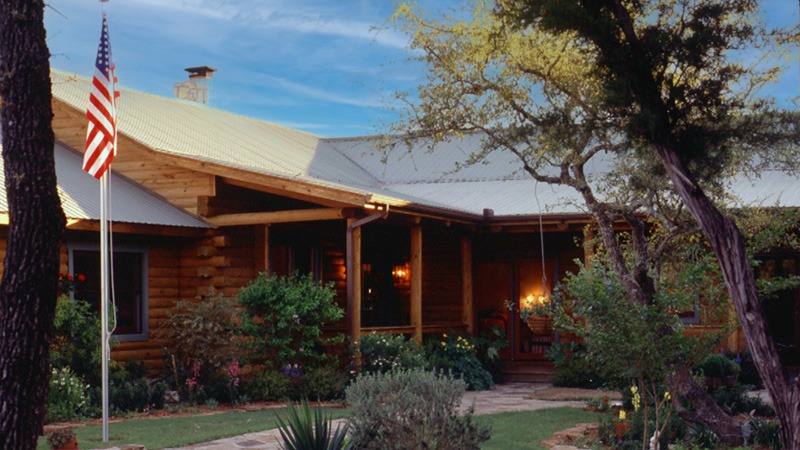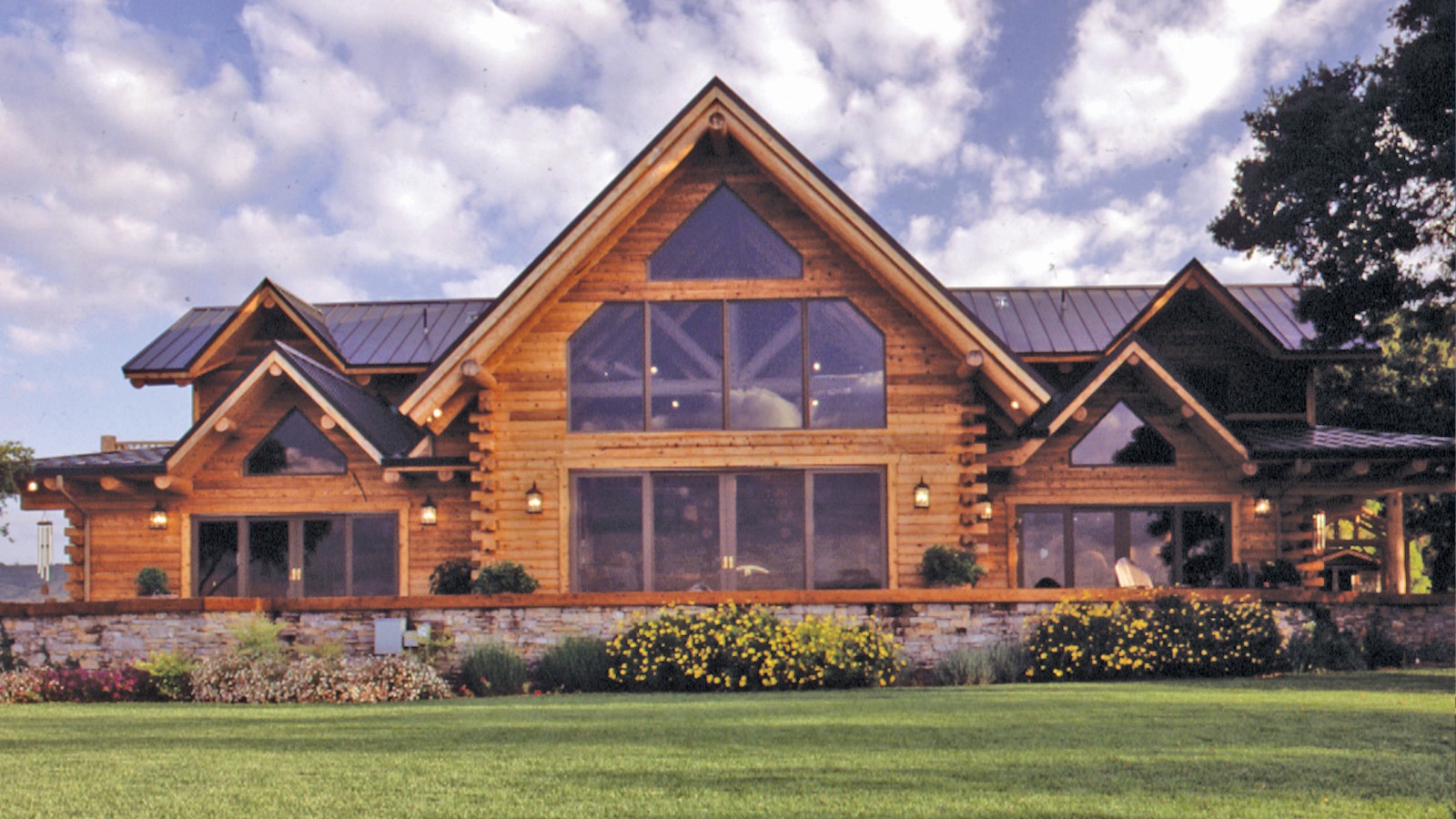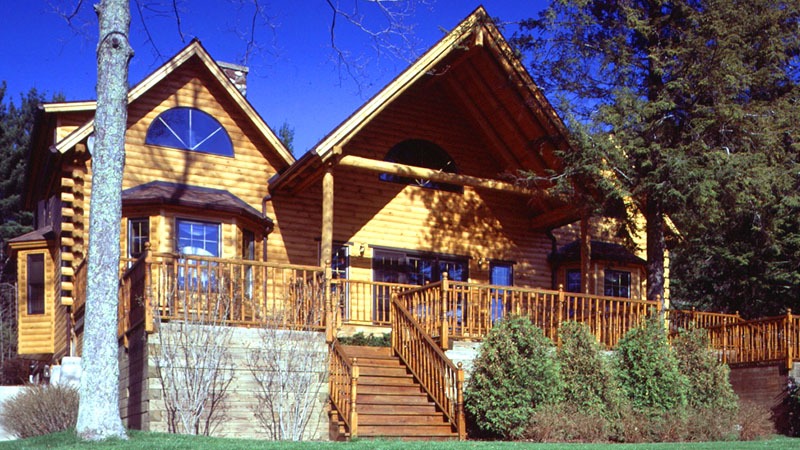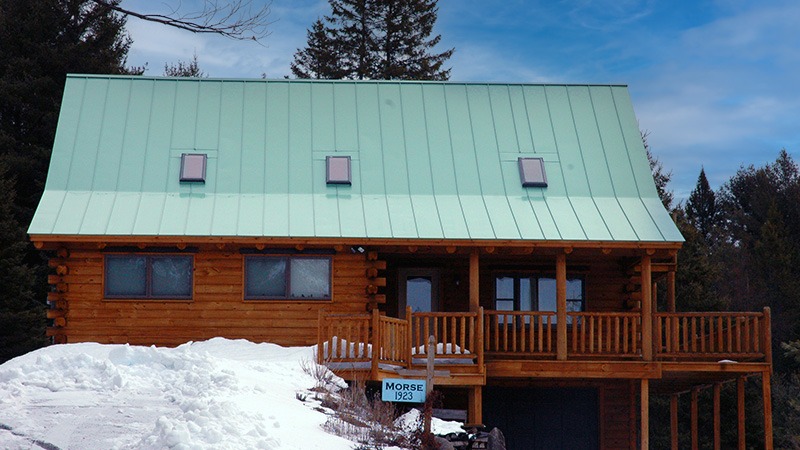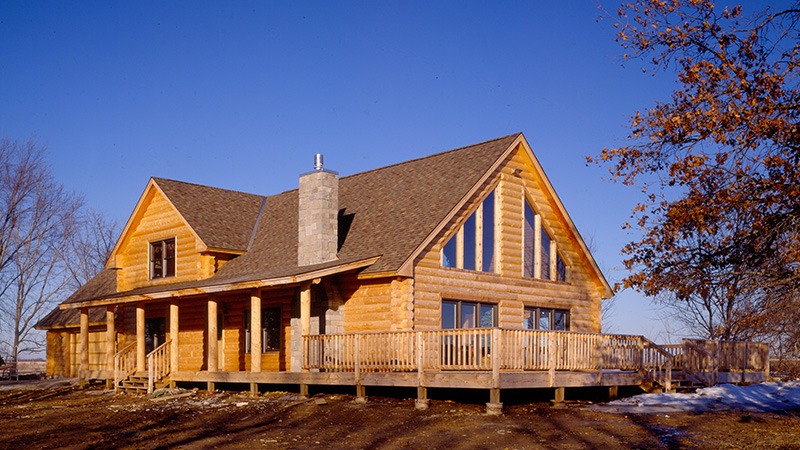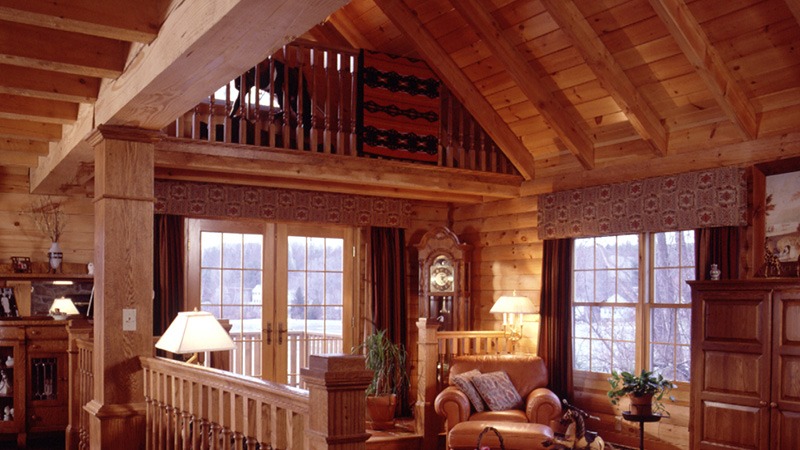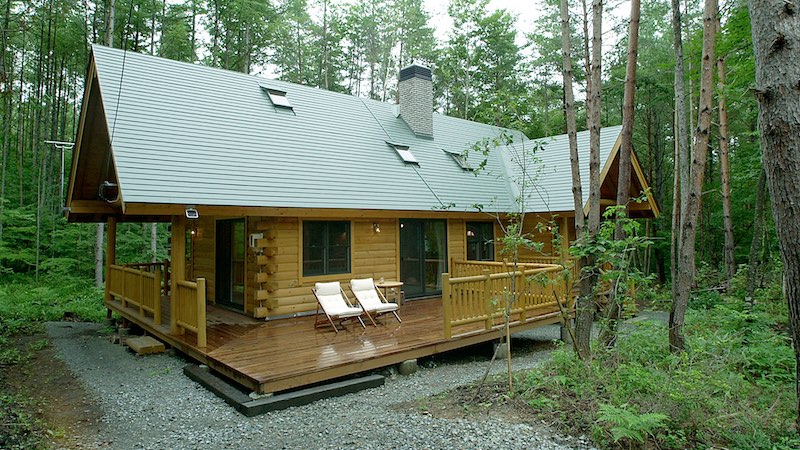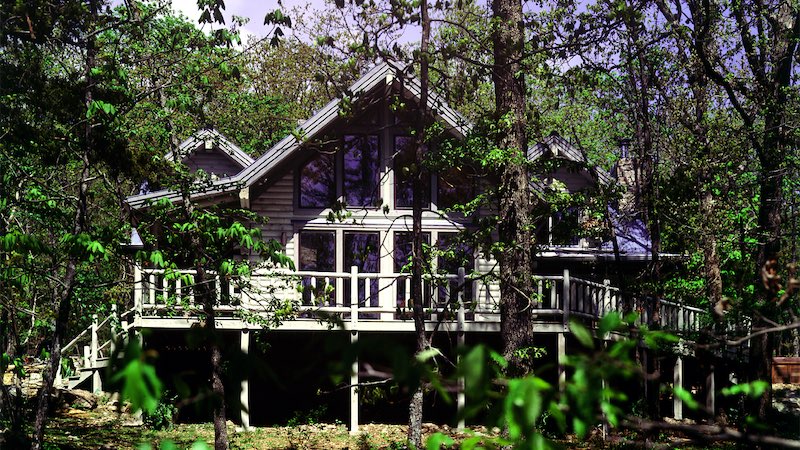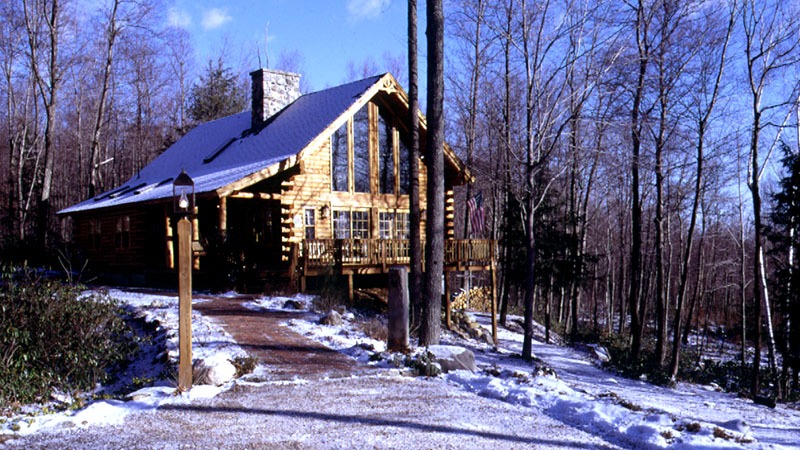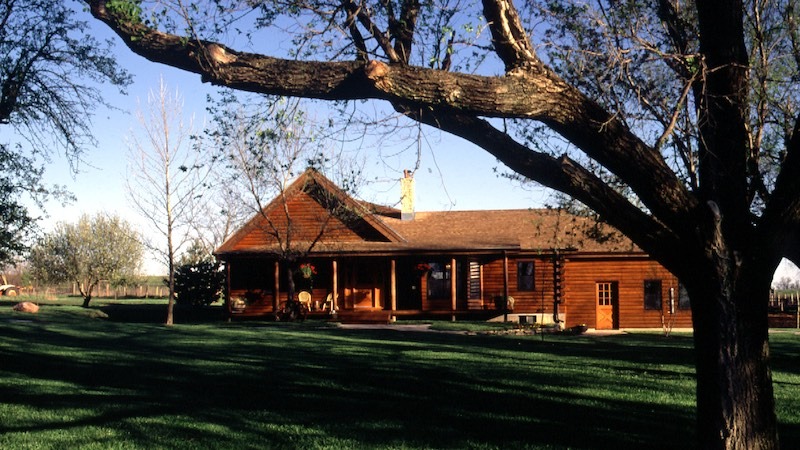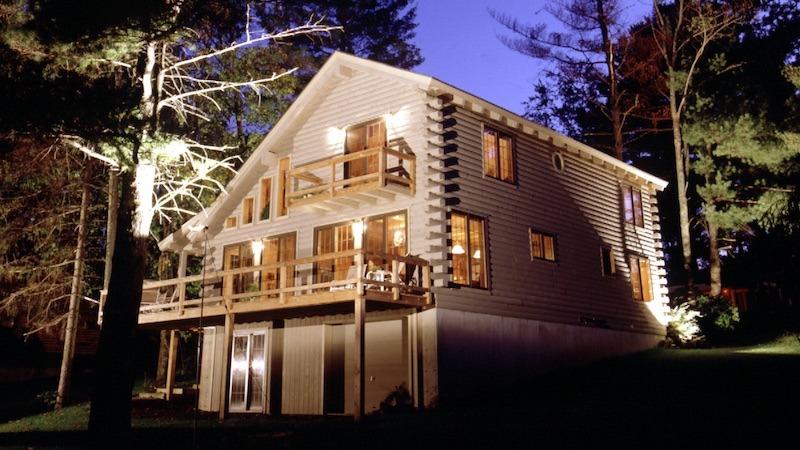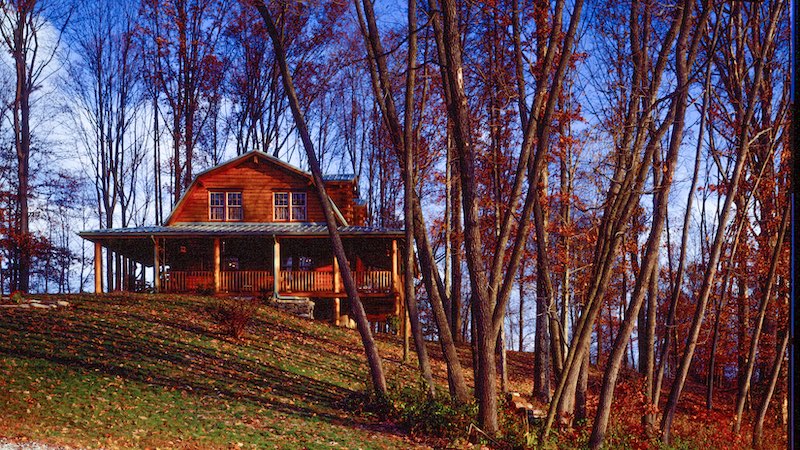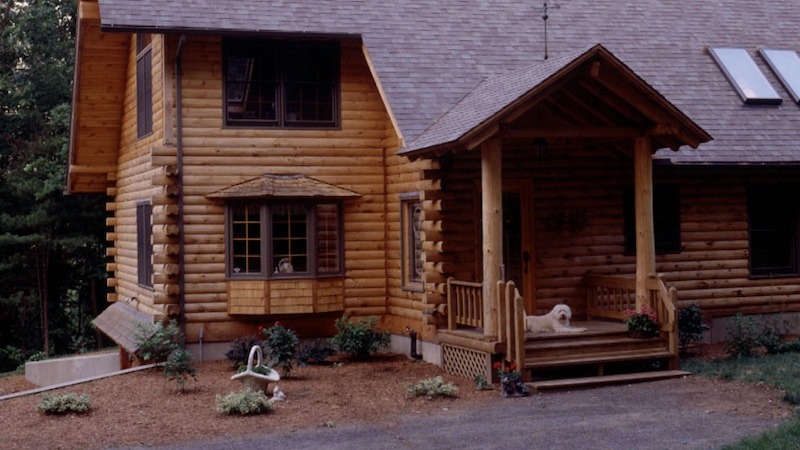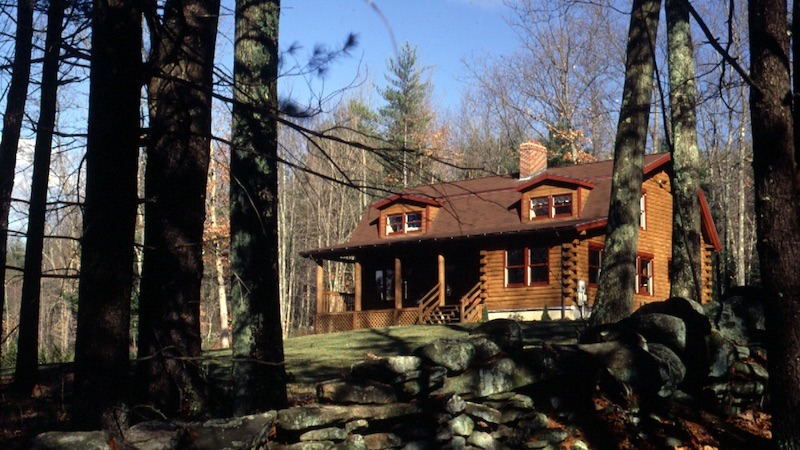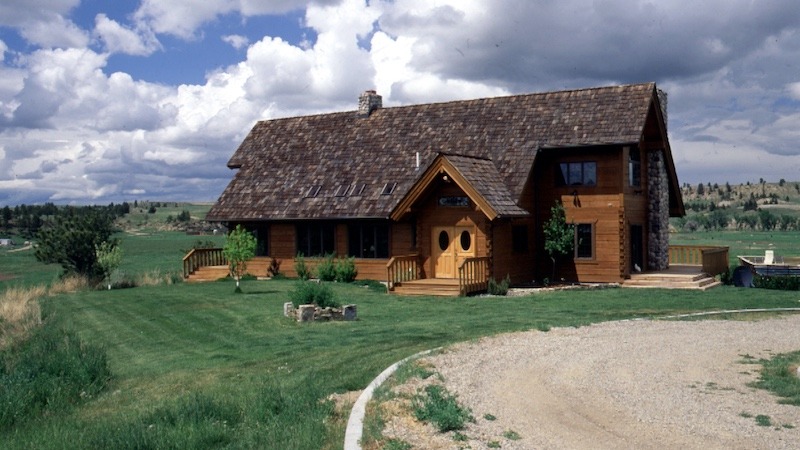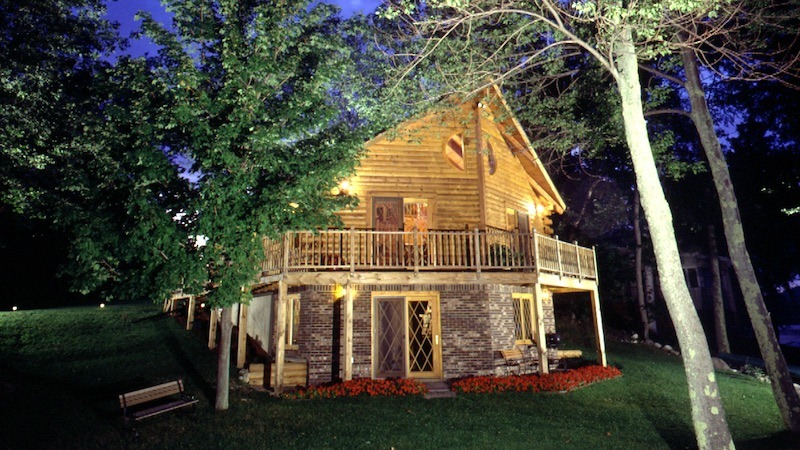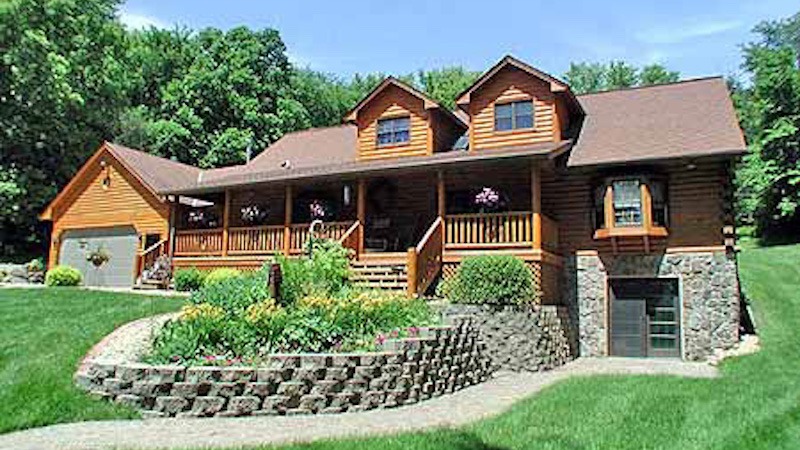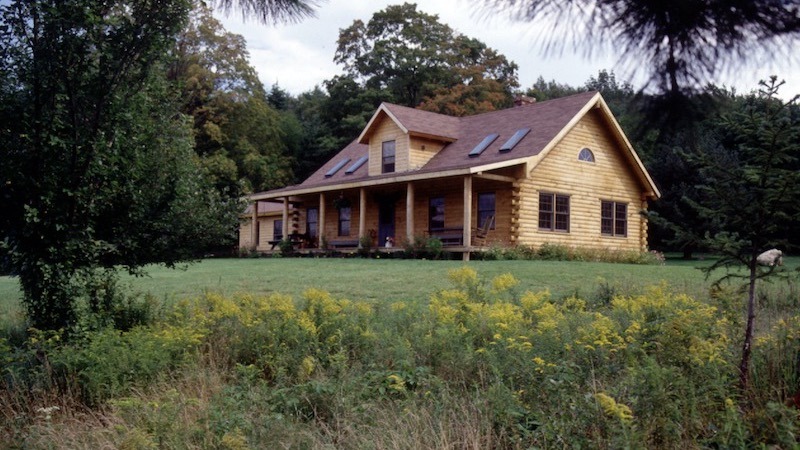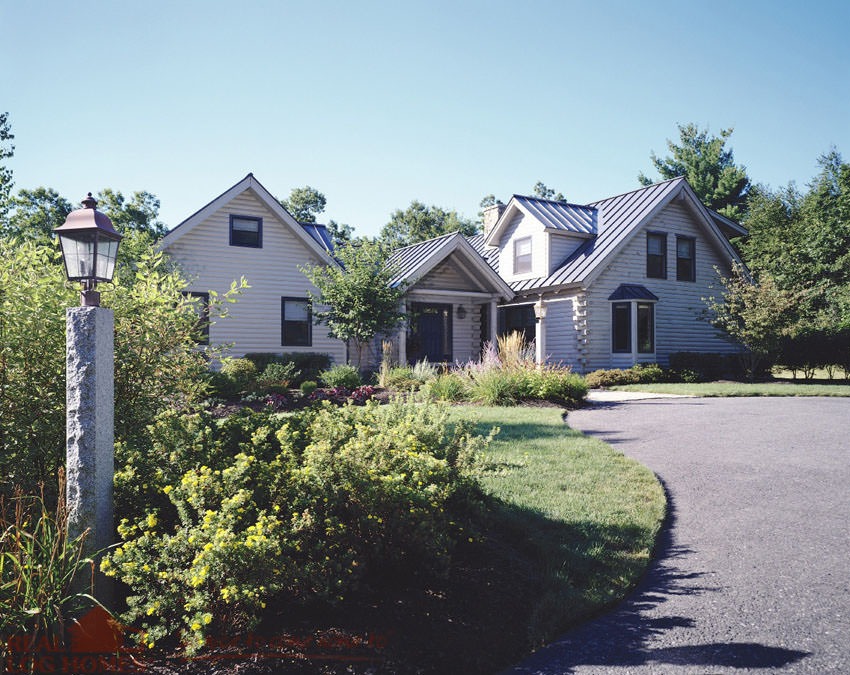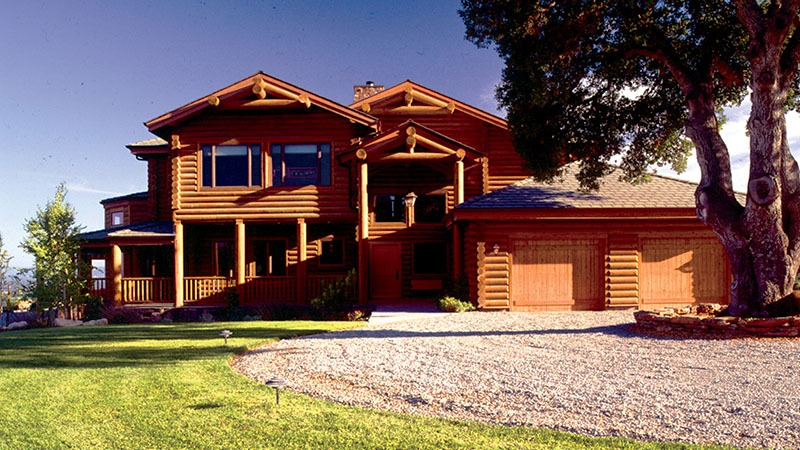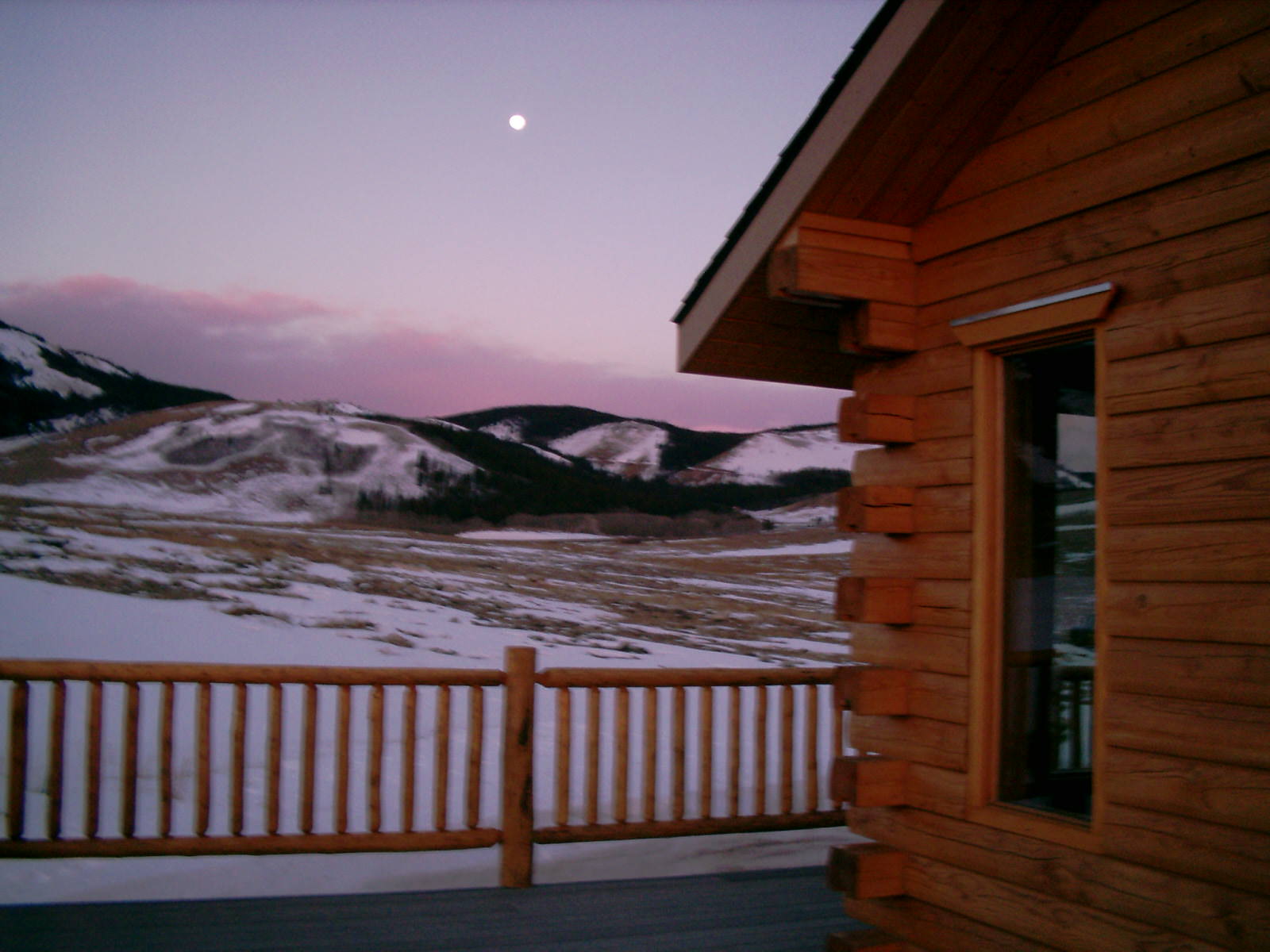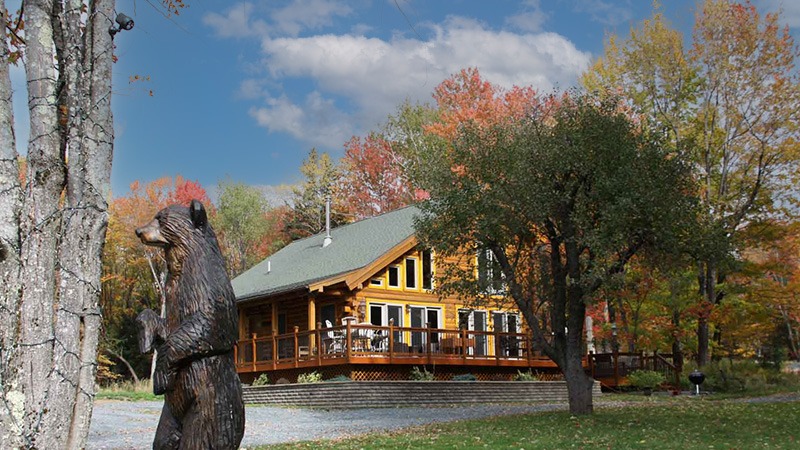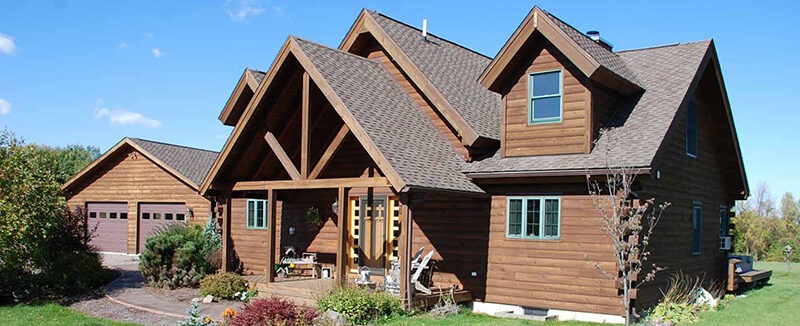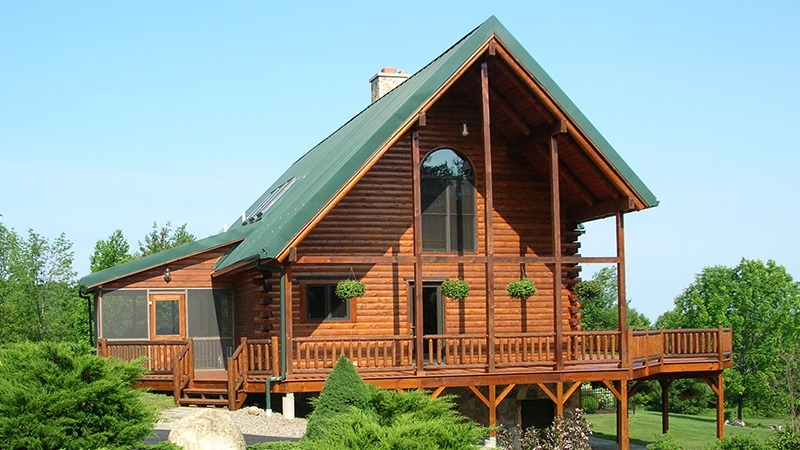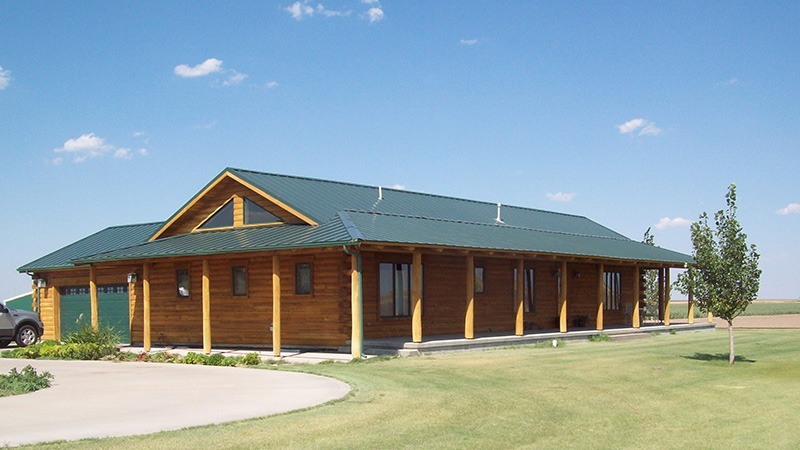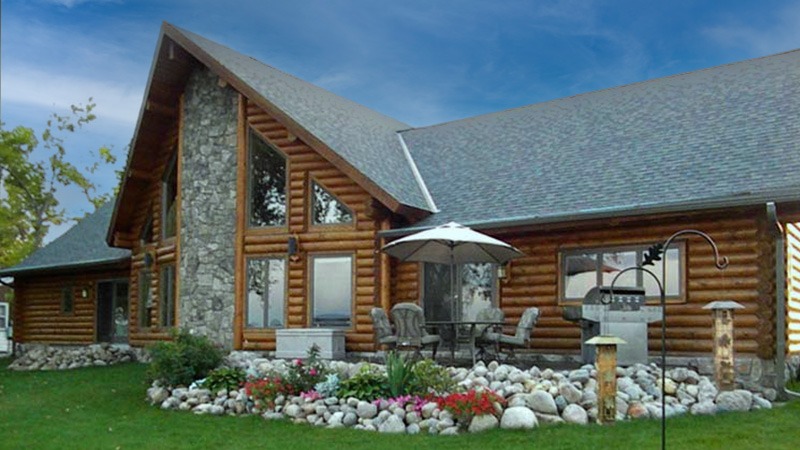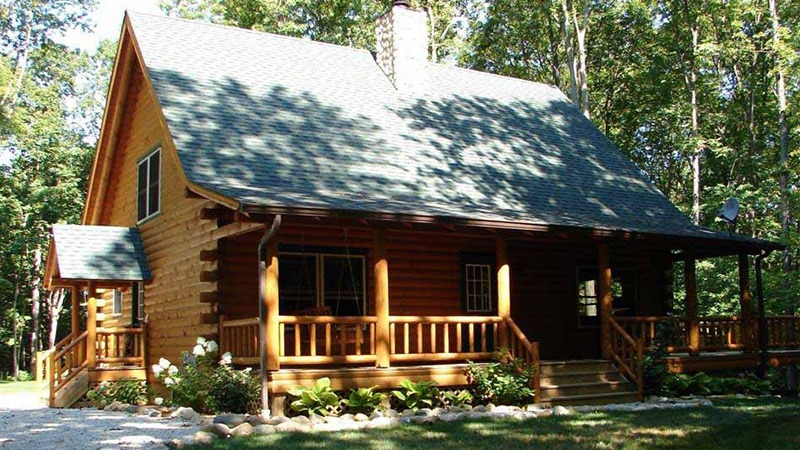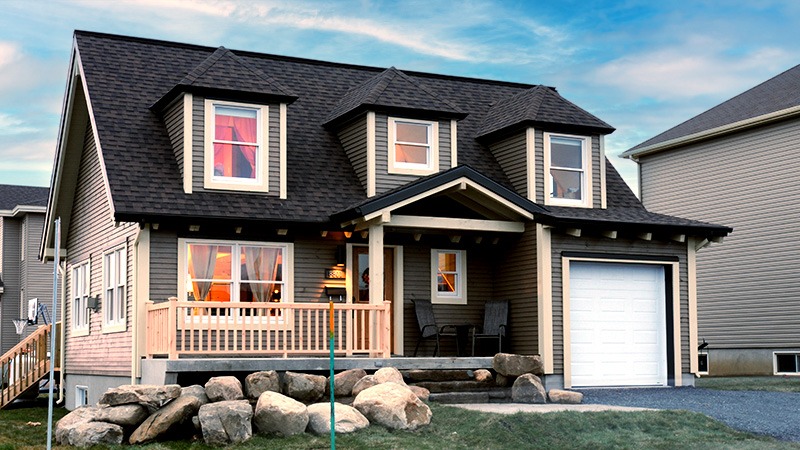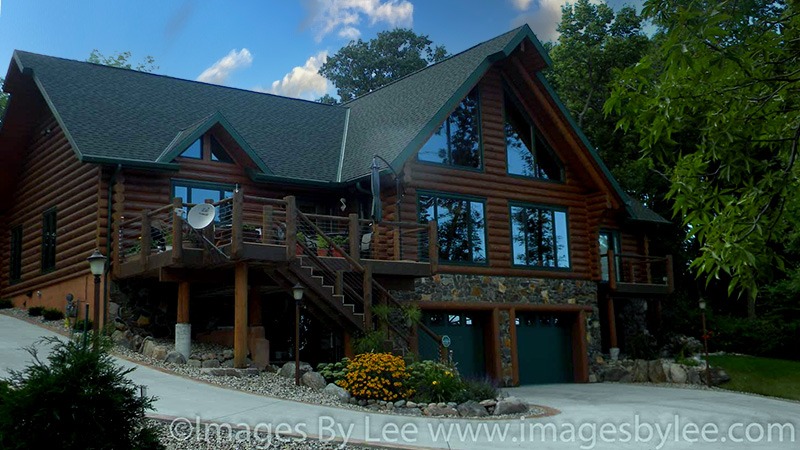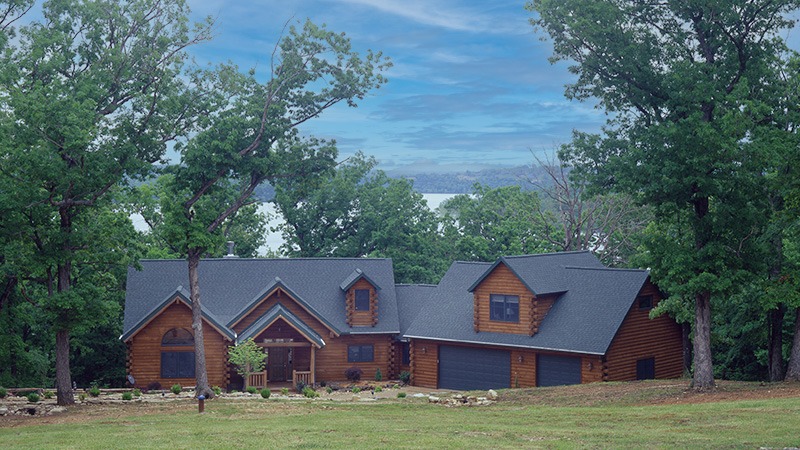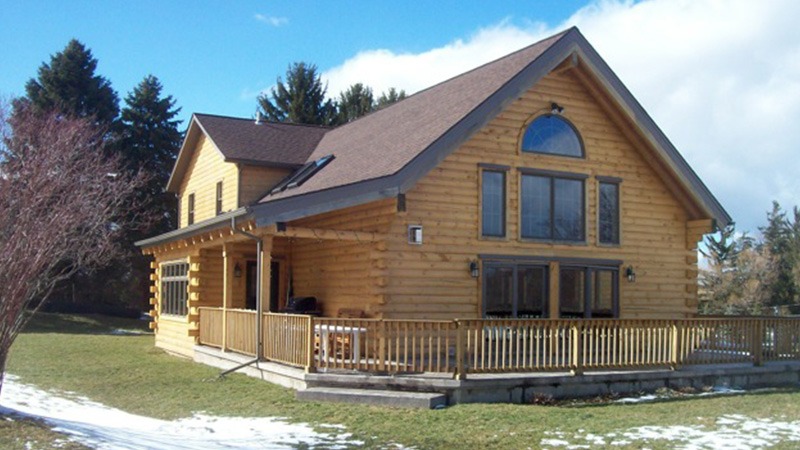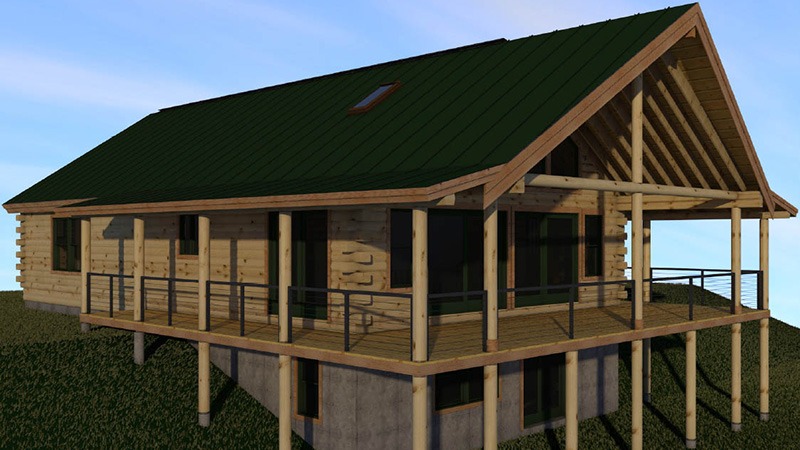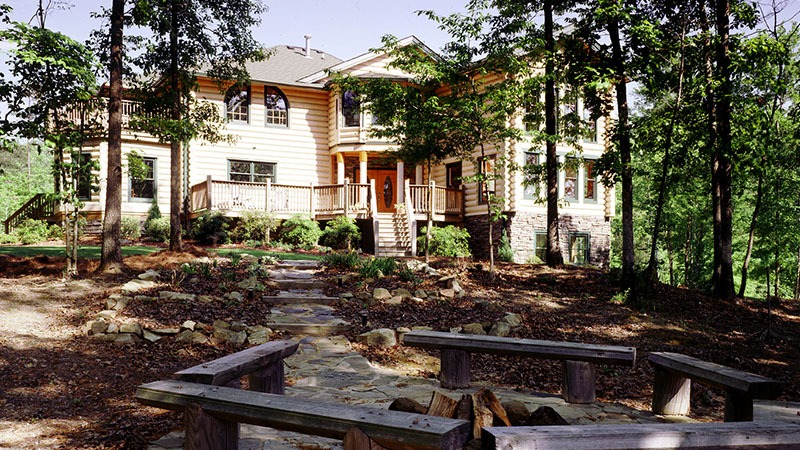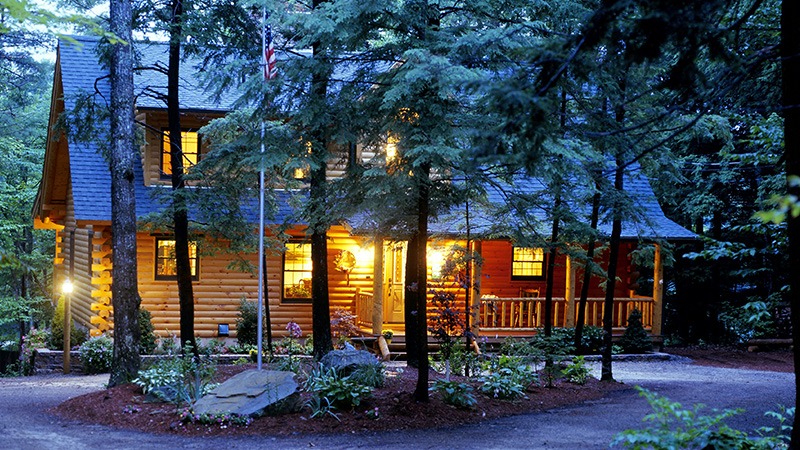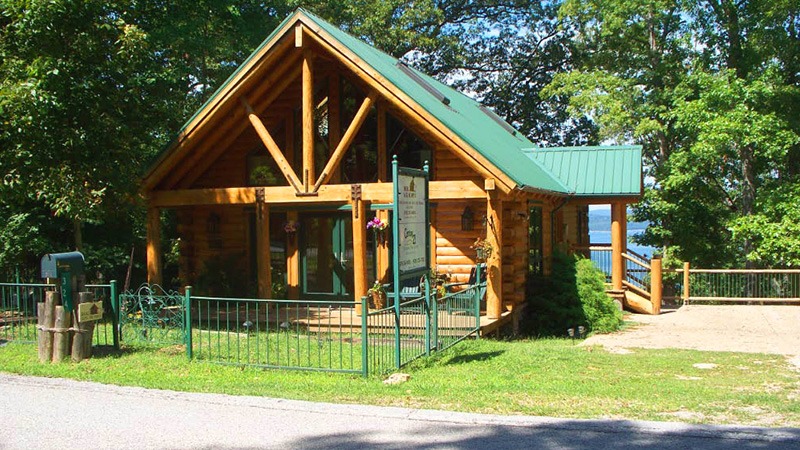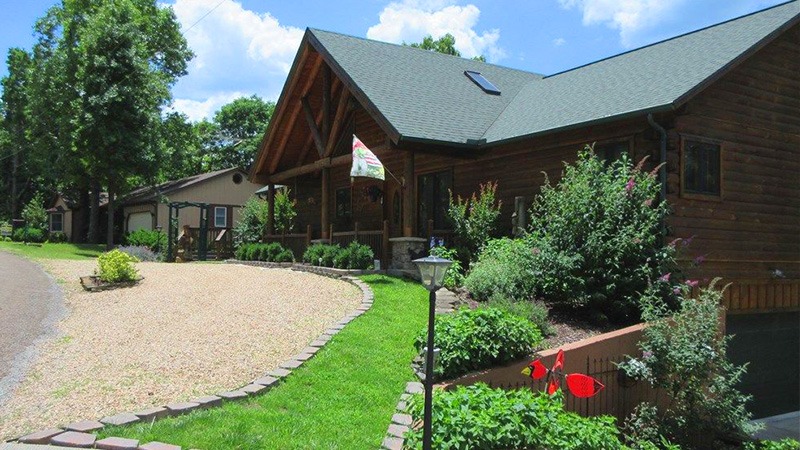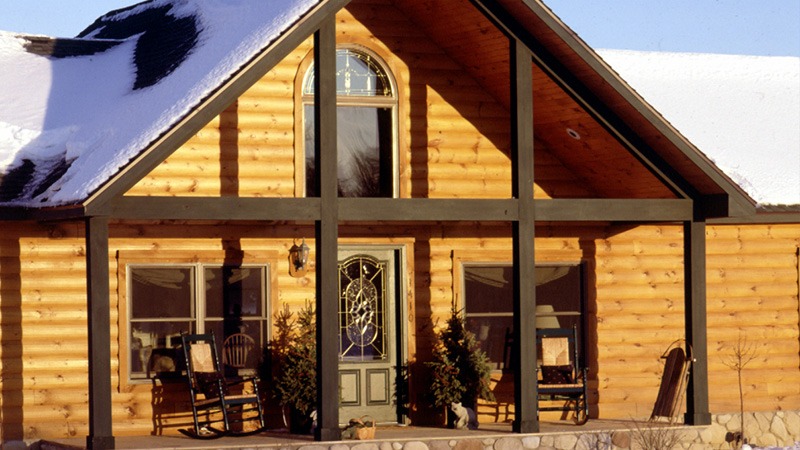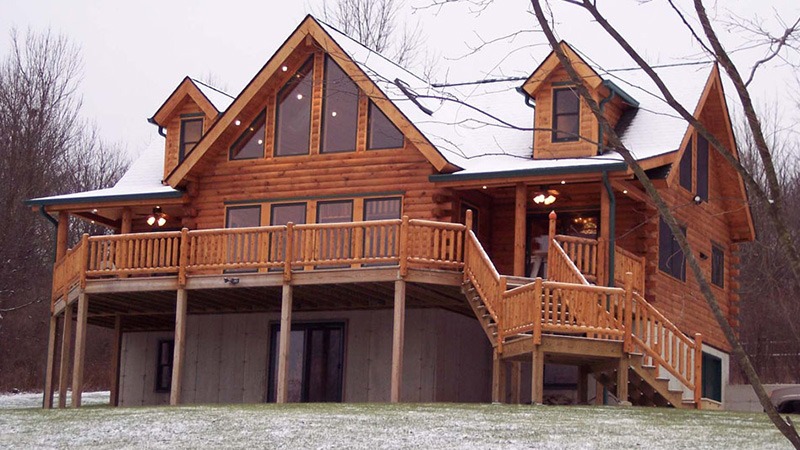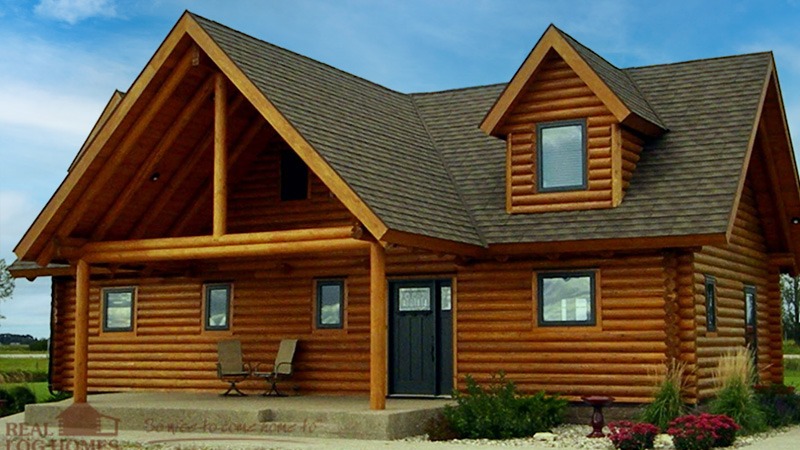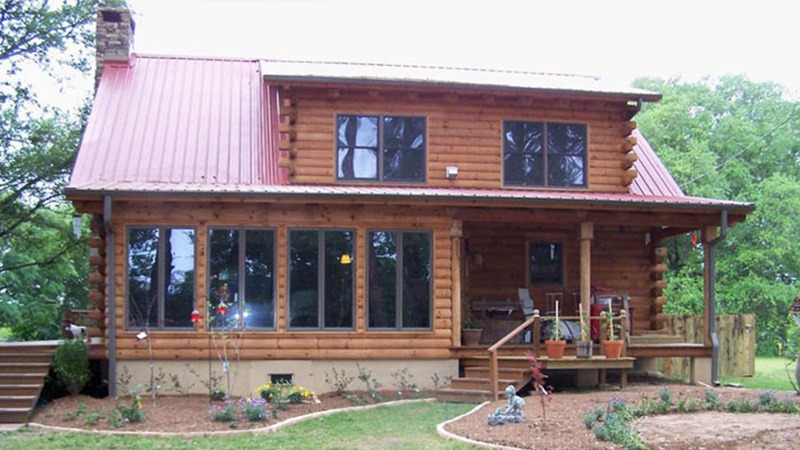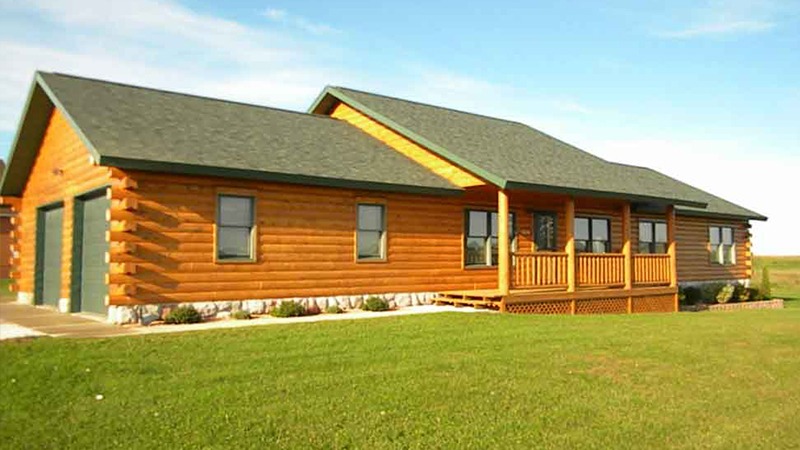
Last week, we started to tell the story of the construction of the New Castle log home. We left off with the log rafters being installed on the home. The next major step is for the ceiling to be installed over the rafters, and for the dormers to be framed. Eventually, the dormers will be clad in a log siding for a consistent look.
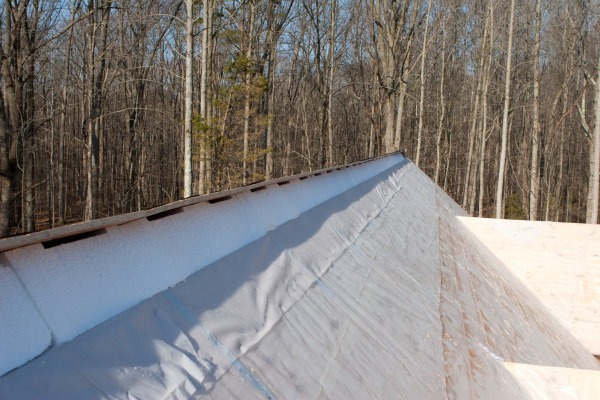
At this point the roof is constructed. The bottom layer is the tongue-and-groove planks that form the ceiling for the room bellow. On top of this is a plastic vapor barrier, then 6 inches of foam insulation. On top of this is the oriented strand board that forms the roof deck, upon which tar paper and shingles will finish out the roof.
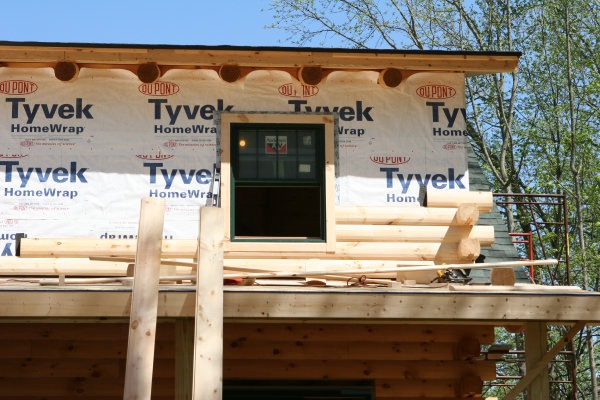
Here, with the roof and dormers built, the log siding is applied to the dormers. While these siding logs are thinner than structural logs, the ends have the same thickness and profile as the structural logs. This creates a seamless appearance between the dormers and log walls.
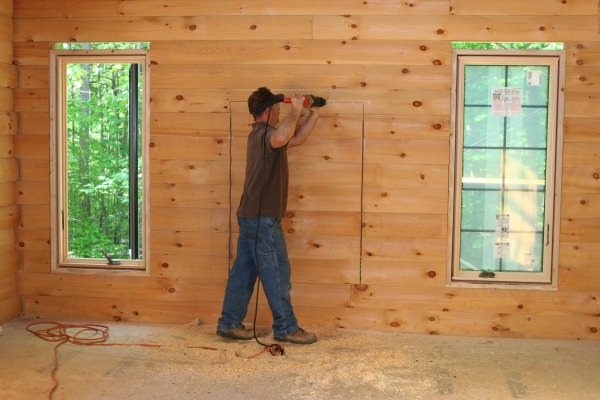
While the window and door openings are pre-cut from the factory, the installation of the fireplace requires cutting the walls on-site. This is certainly one of those times when the maxim “measure twice, cut once” is very important!
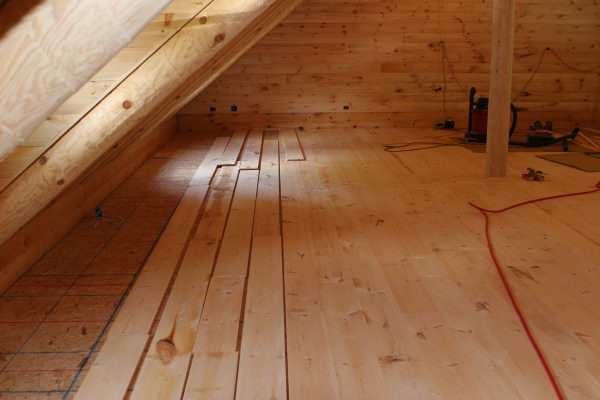
Now that the interior is closed-in, the flooring is installed. In this shot of the upper floor, a wide plank flooring is used. The flooring is arranged so that seams of adjacent rows do not line up together. The wide planks feel right at home in this farmhouse, while also installing more quickly than a narrower plank. A rectangular room also helps the flooring go in quickly.
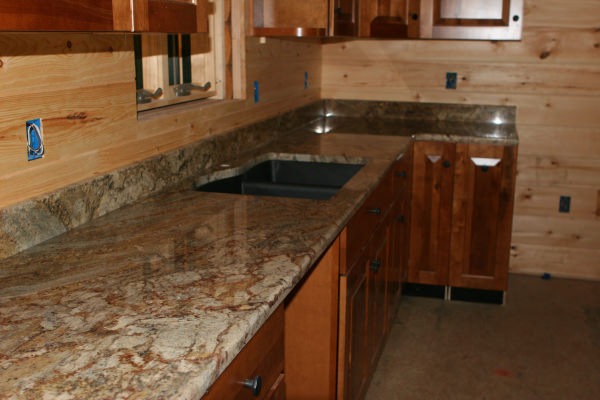
Down in the kitchen, the cabinets are installed and then the granite counters. At this point the electrical wiring and plumbing has been roughed in as well. The black sink is a unique touch.
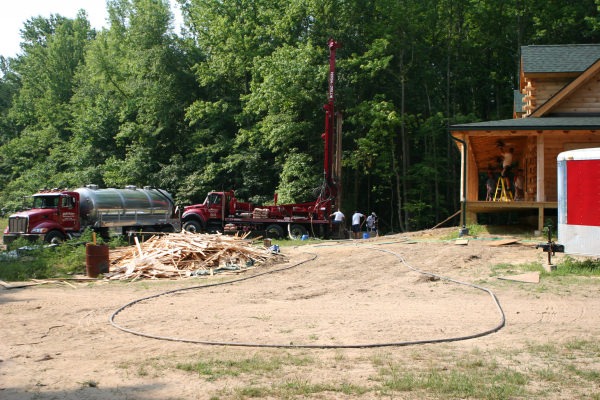
This house uses a geothermal heating system and at this point the wells were dug. The system works by pumping water in a closed loop through six wells, each 100 feet deep. This extracts heat from the ground in the winter, or it can be used to pump heat into the ground in the summer to cool the home. This type of system is more energy efficient than an air-source heat pump or air-conditioner.

Once the flooring is in place, staining is the major task left to complete. Rollers can make quick work of flat surfaces like floors, but the rafters and logs require brush painting or spray staining. The homeowners also finished the floors with four coats of tung oil. While this staining and oiling was a lot of work, it ensured that the house was beautiful and durable.
We want to thank the Crellin family for letting us share their home and photos and hope you’ve enjoyed this look at the construction of their “New Castle” home. If their story has inspired you to build your own log home, or have it built for you, please call Real Log Homes today or fill out the form below for more information.
